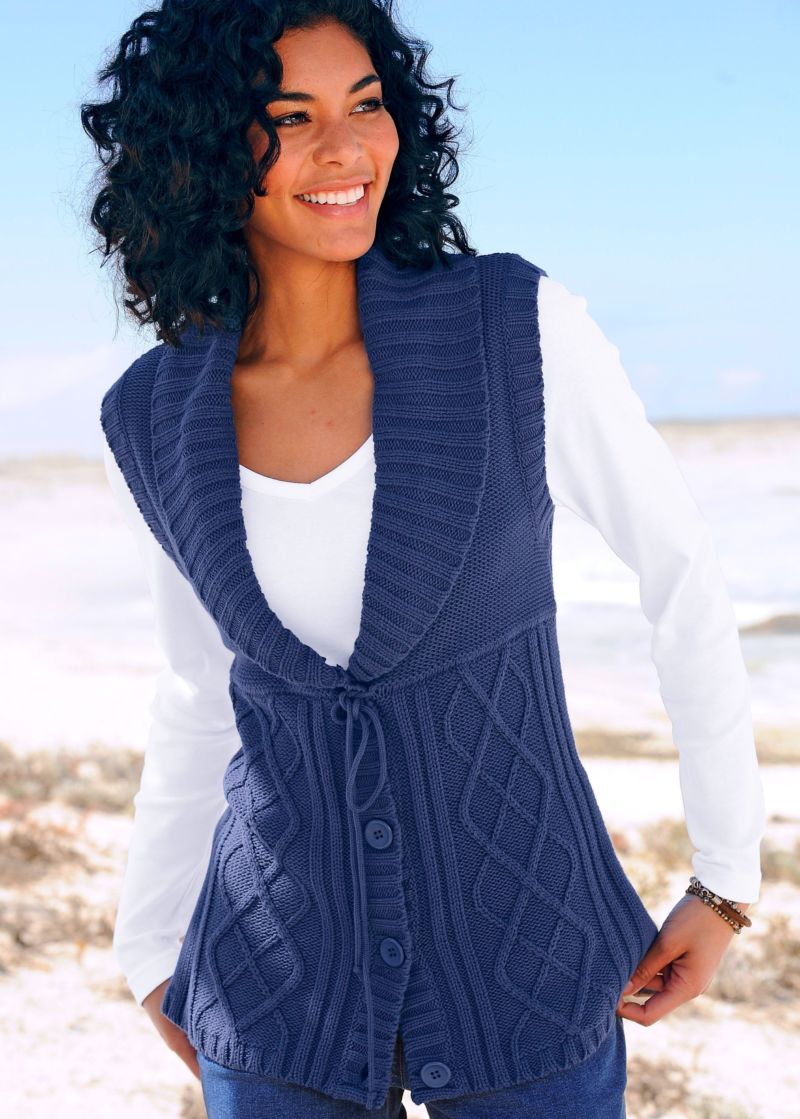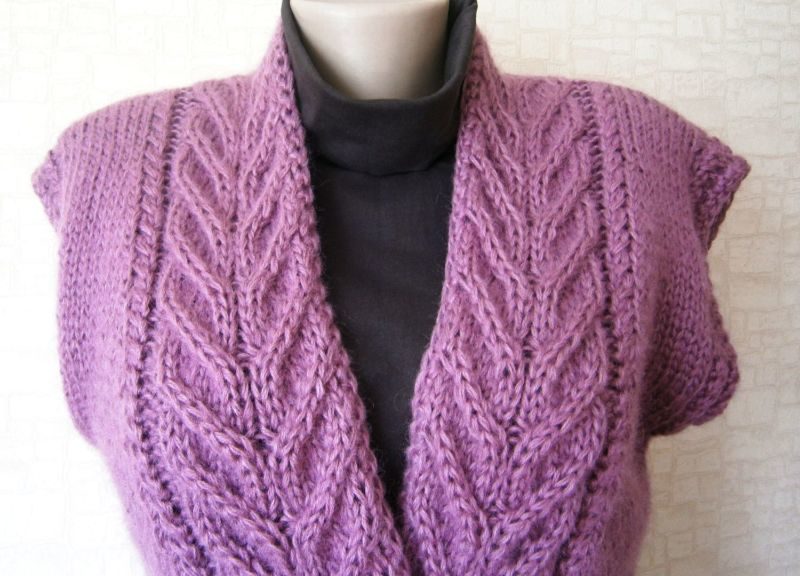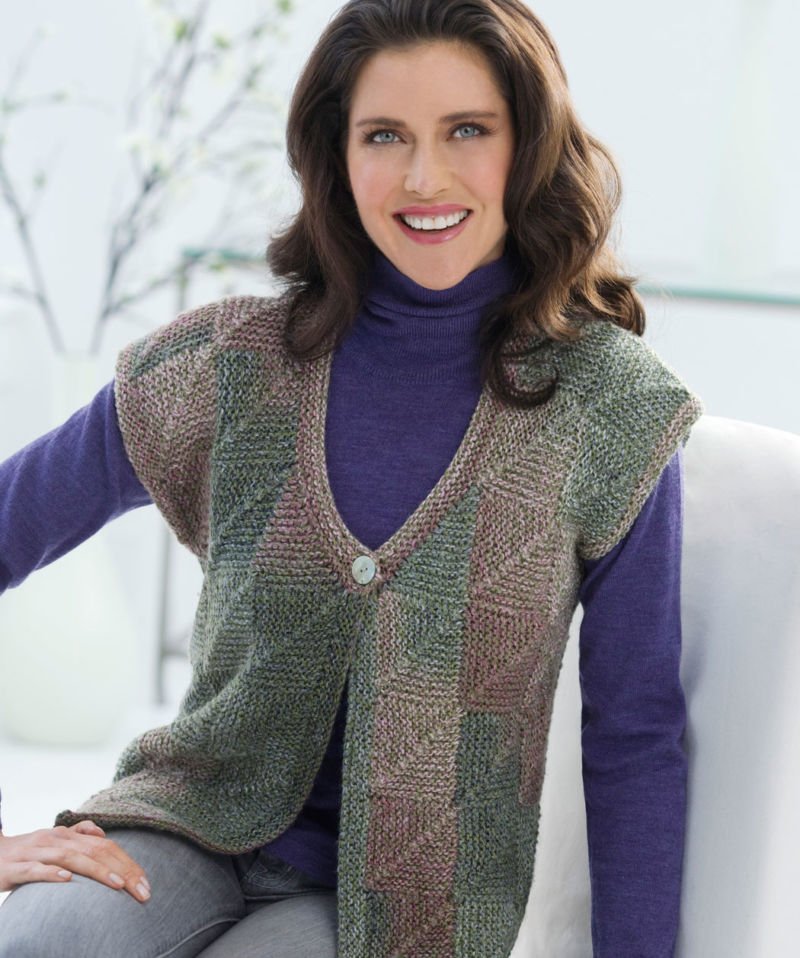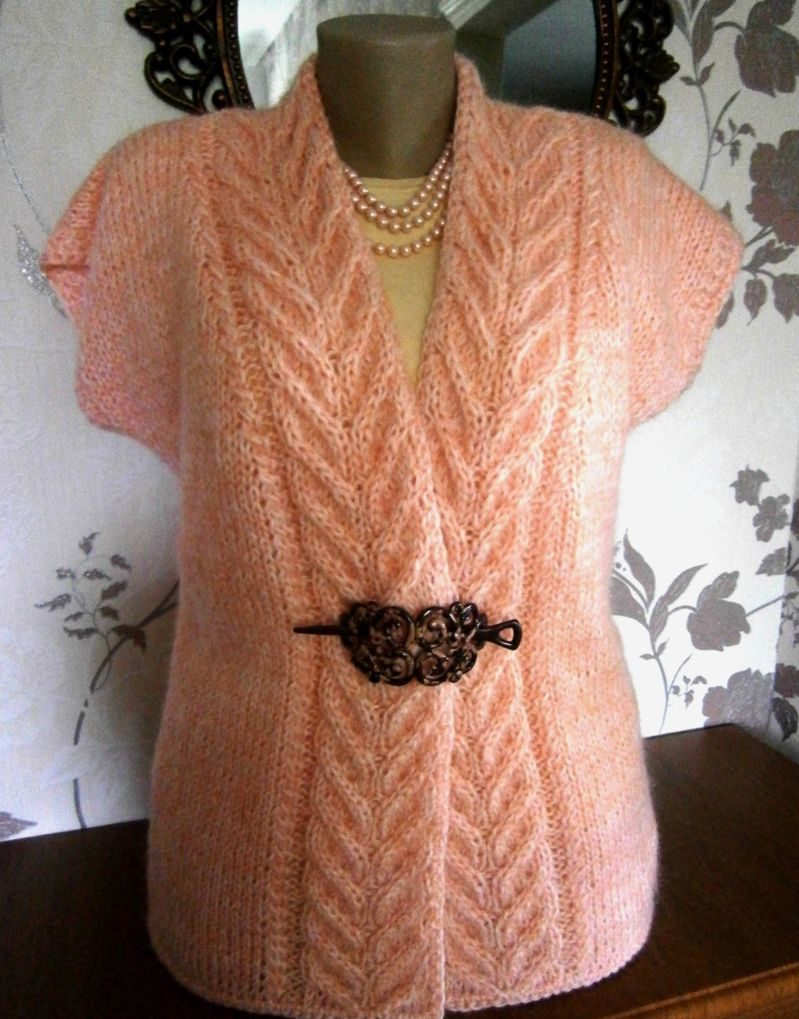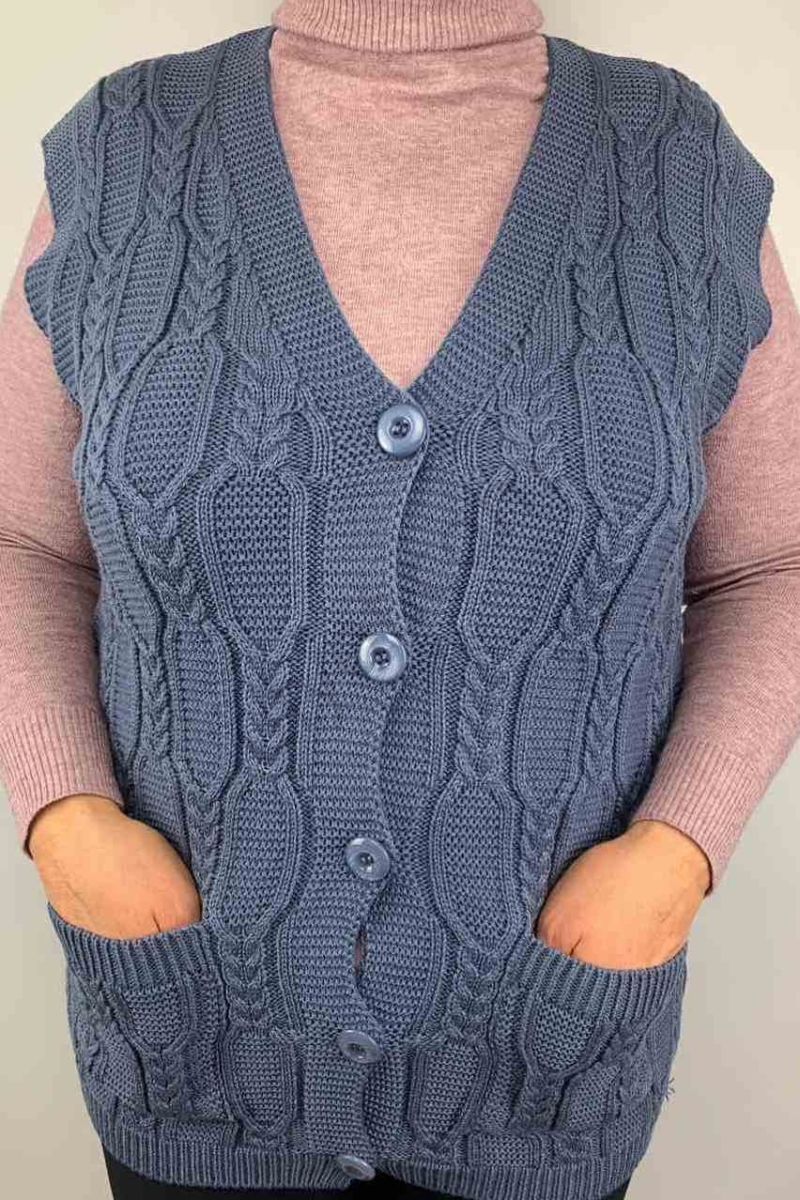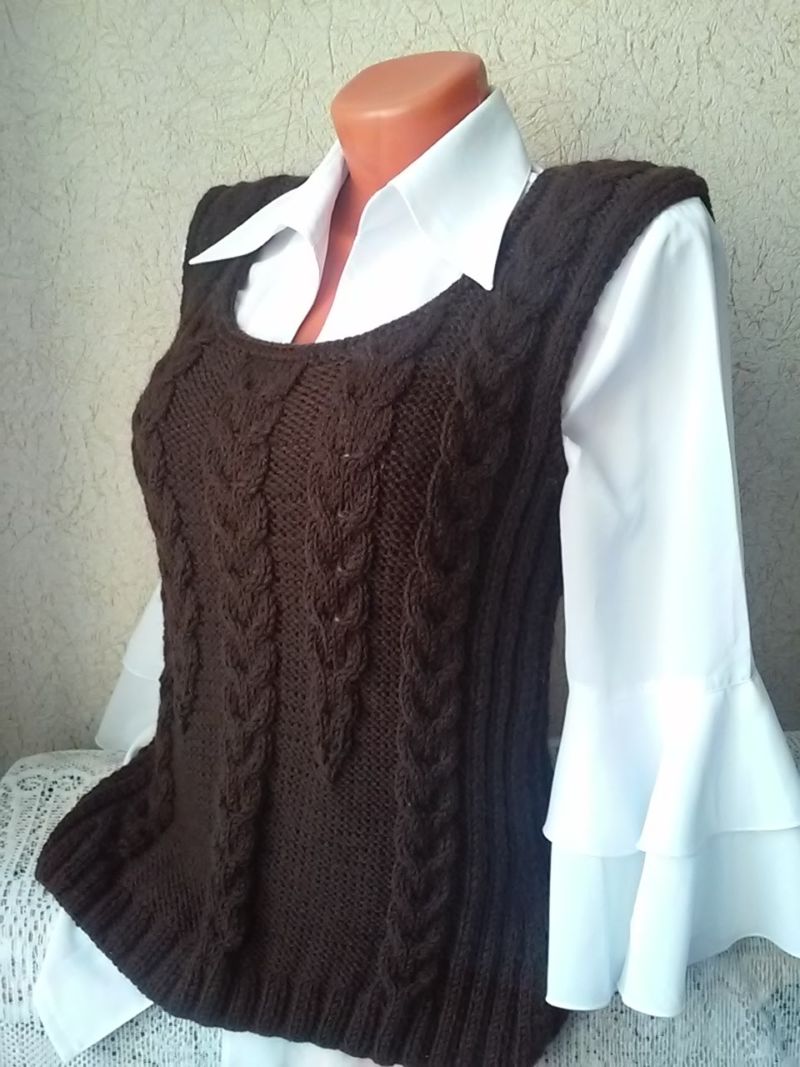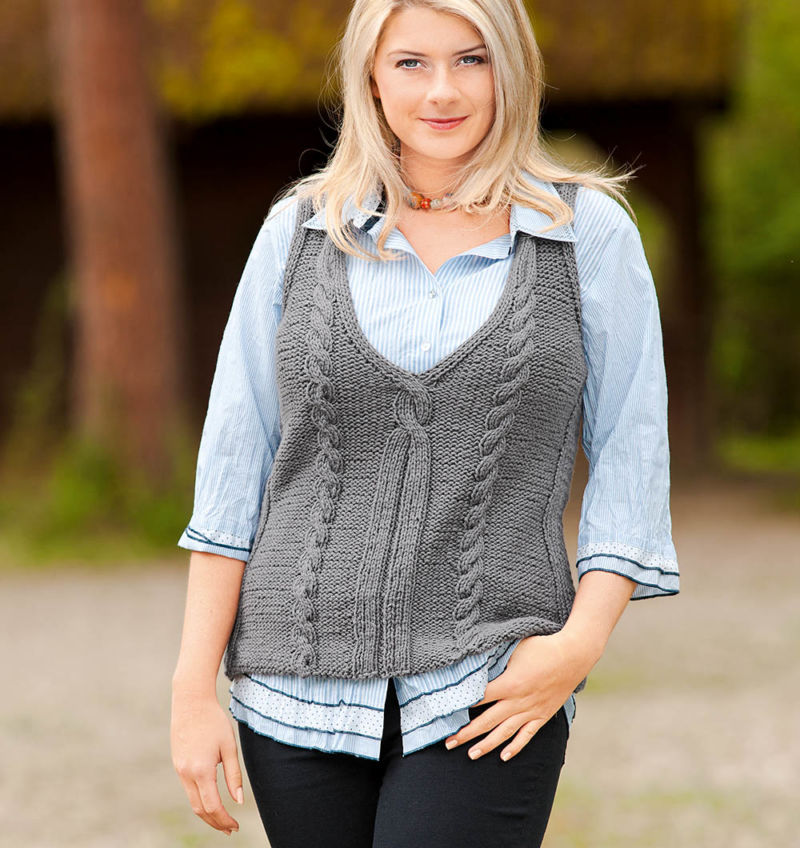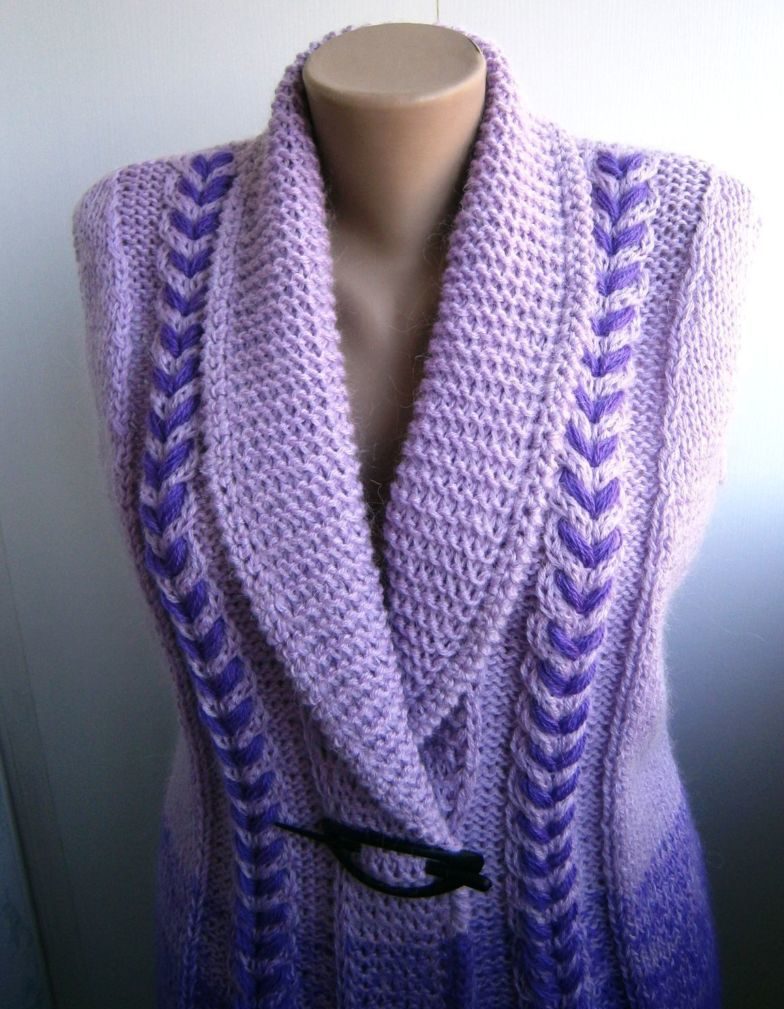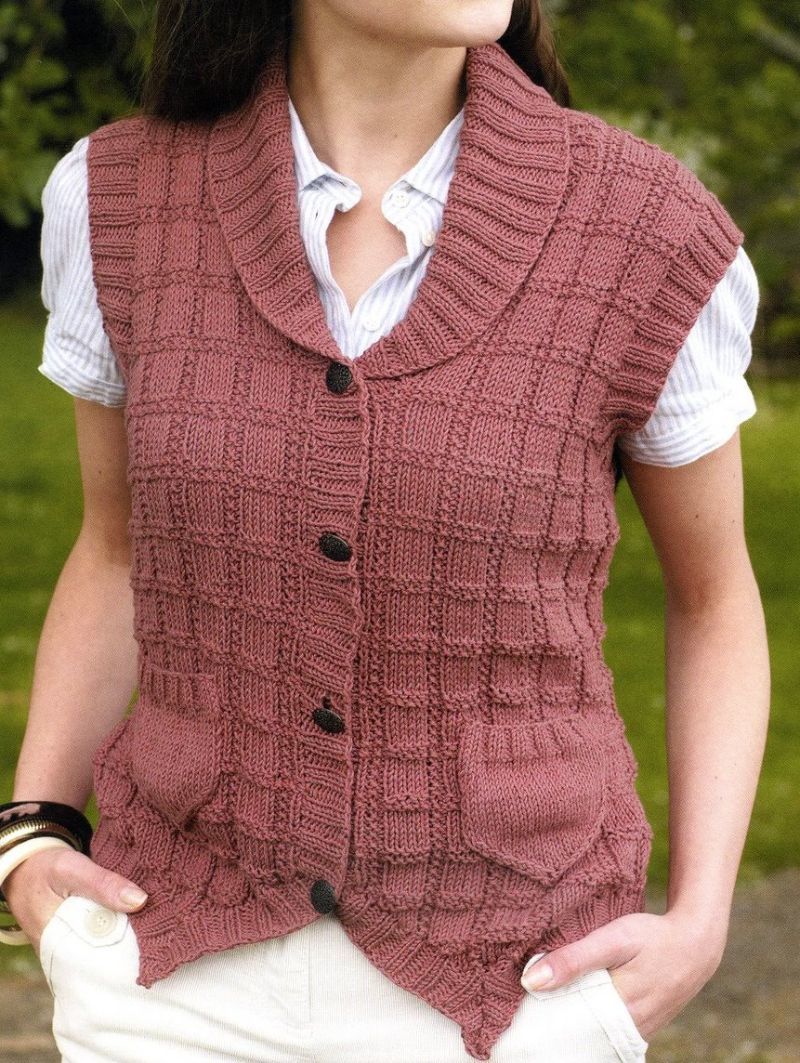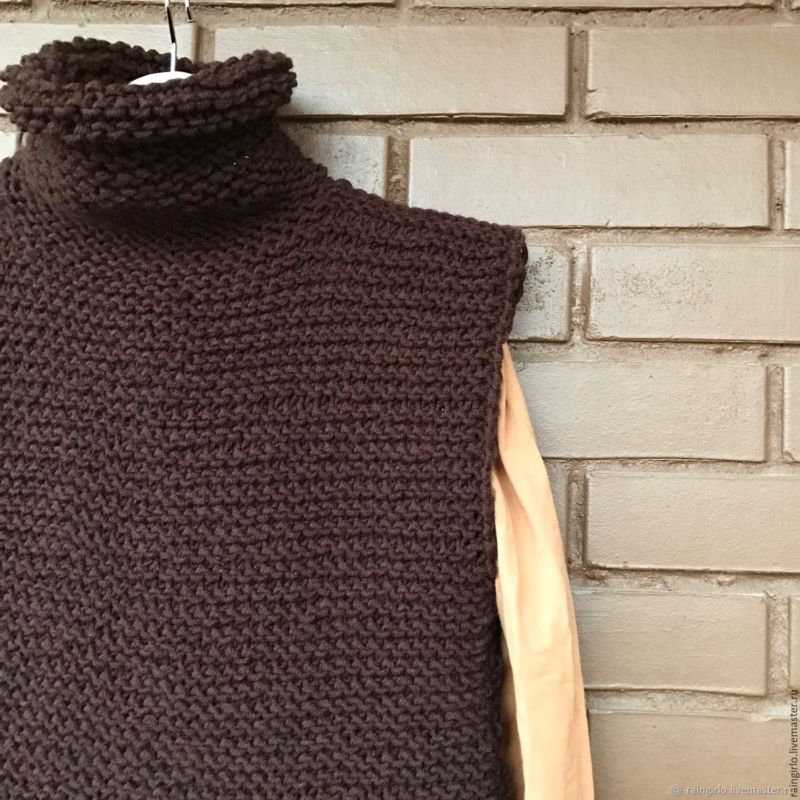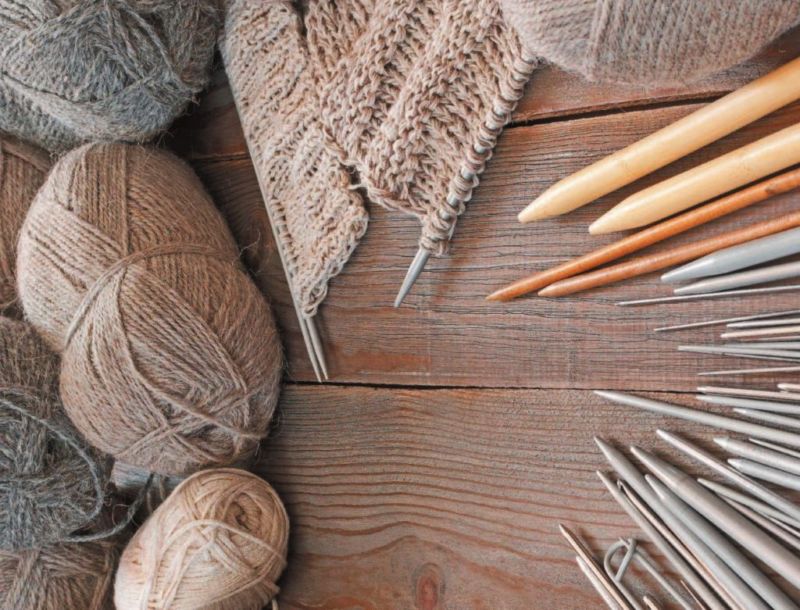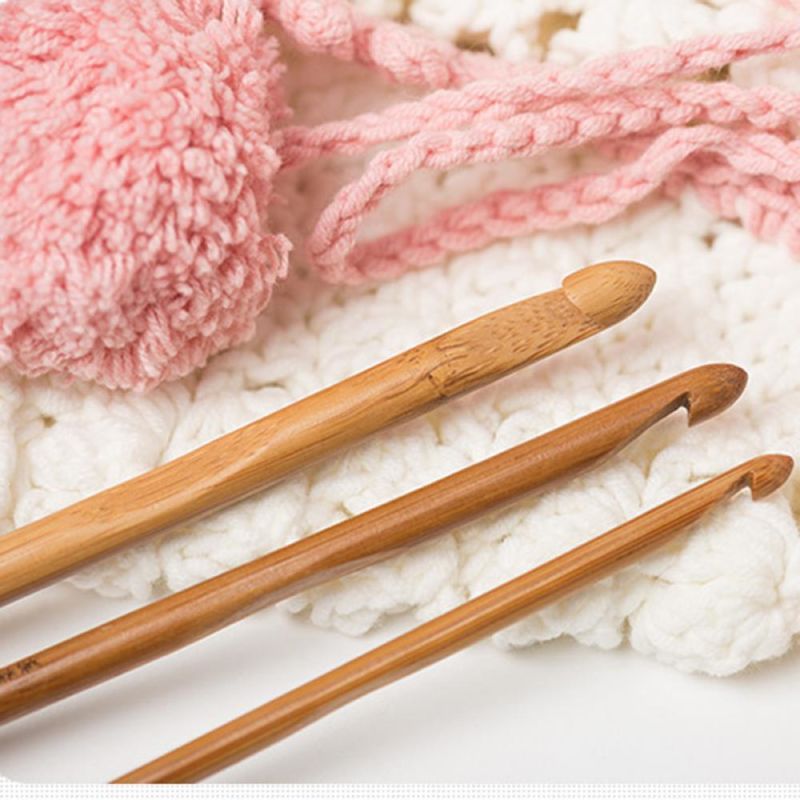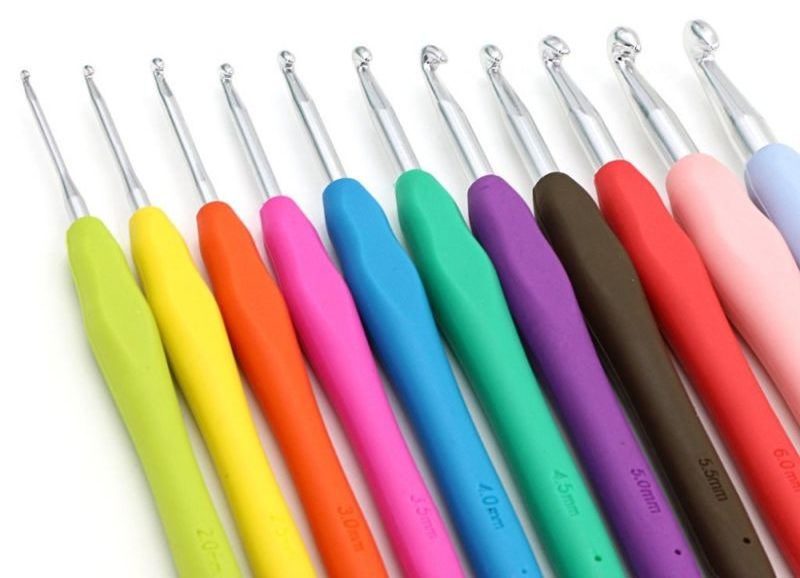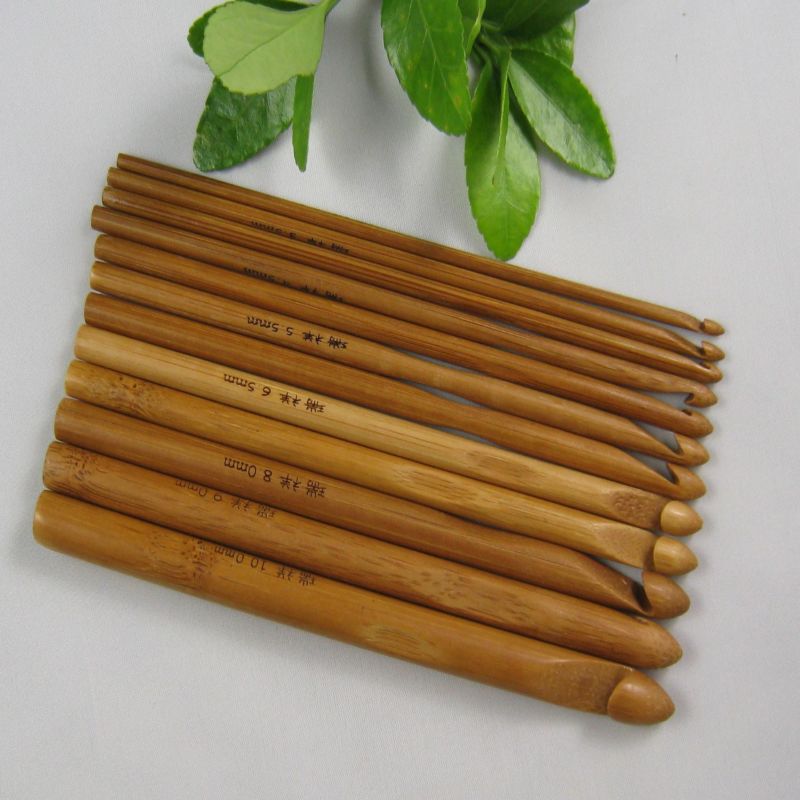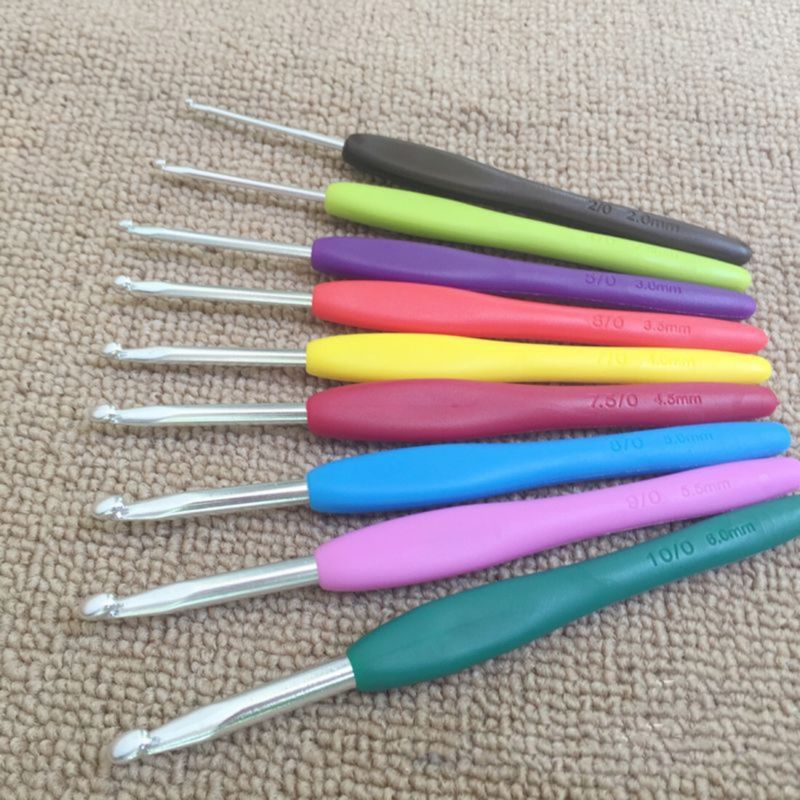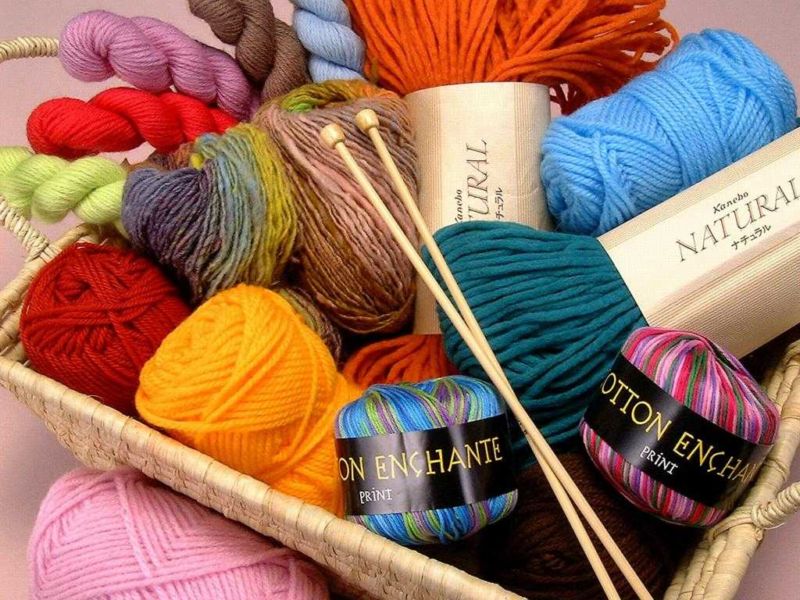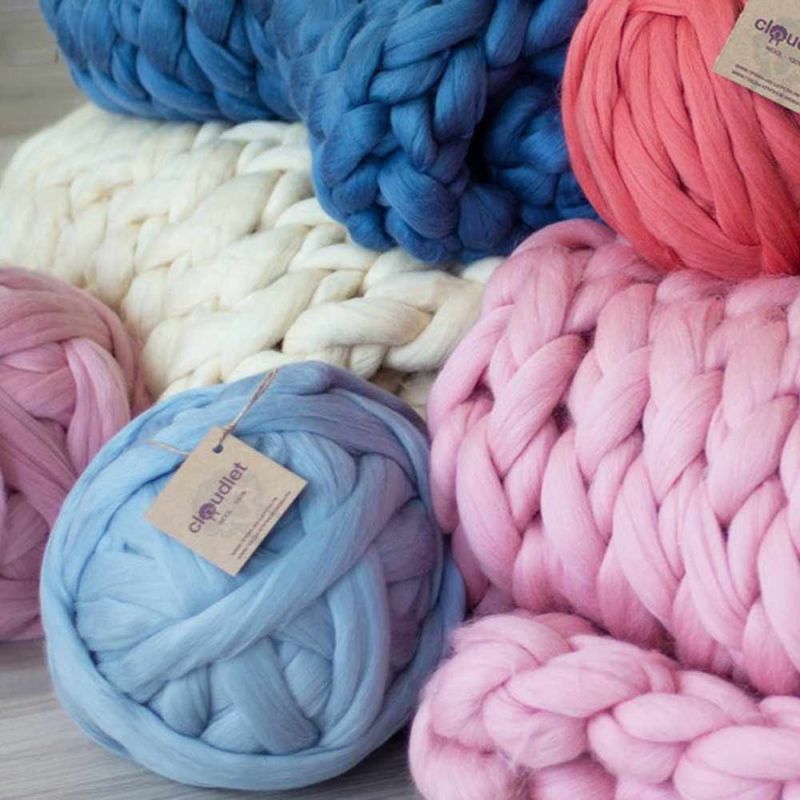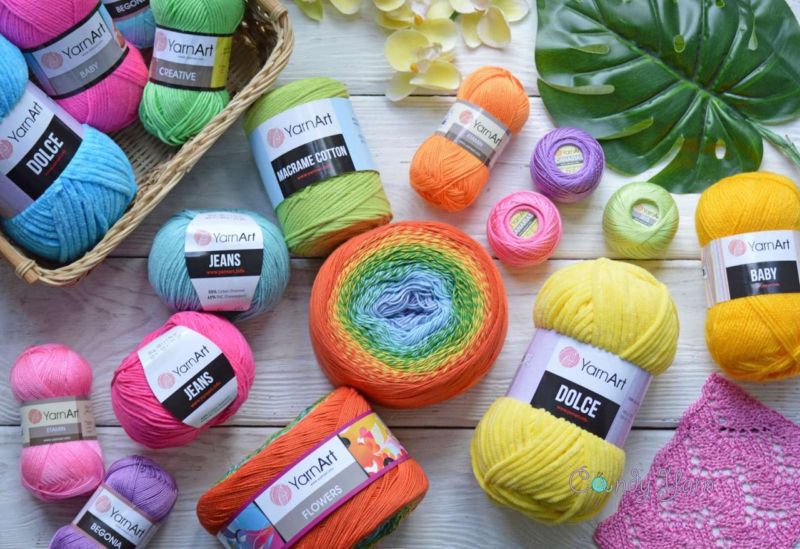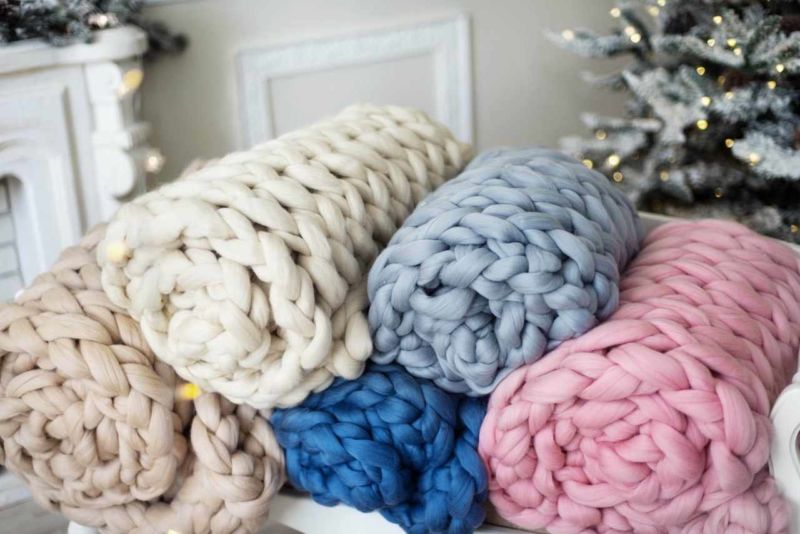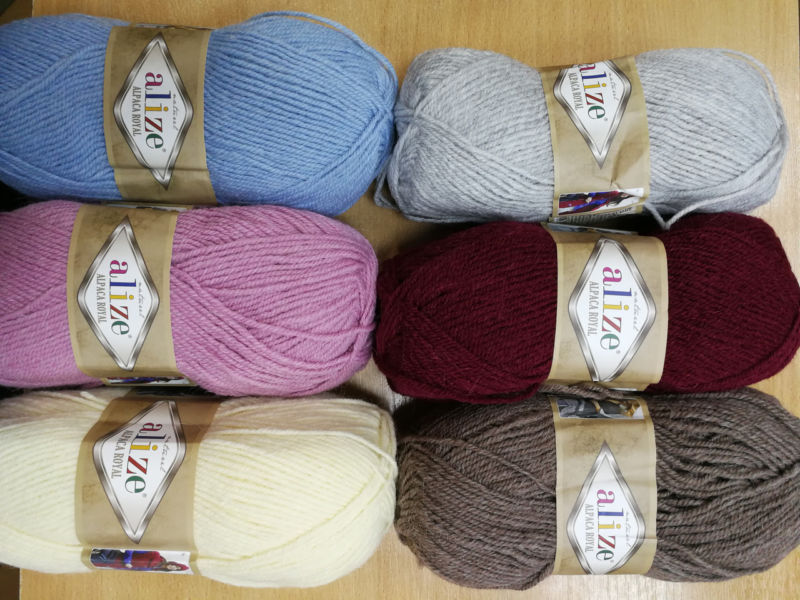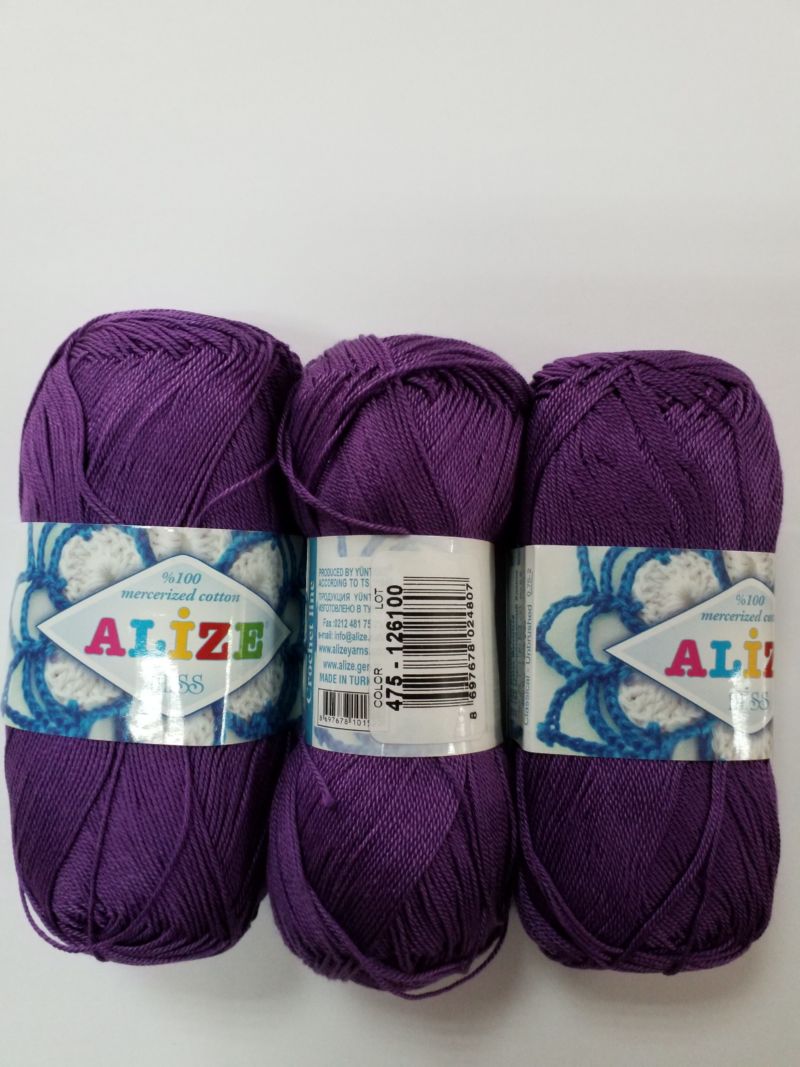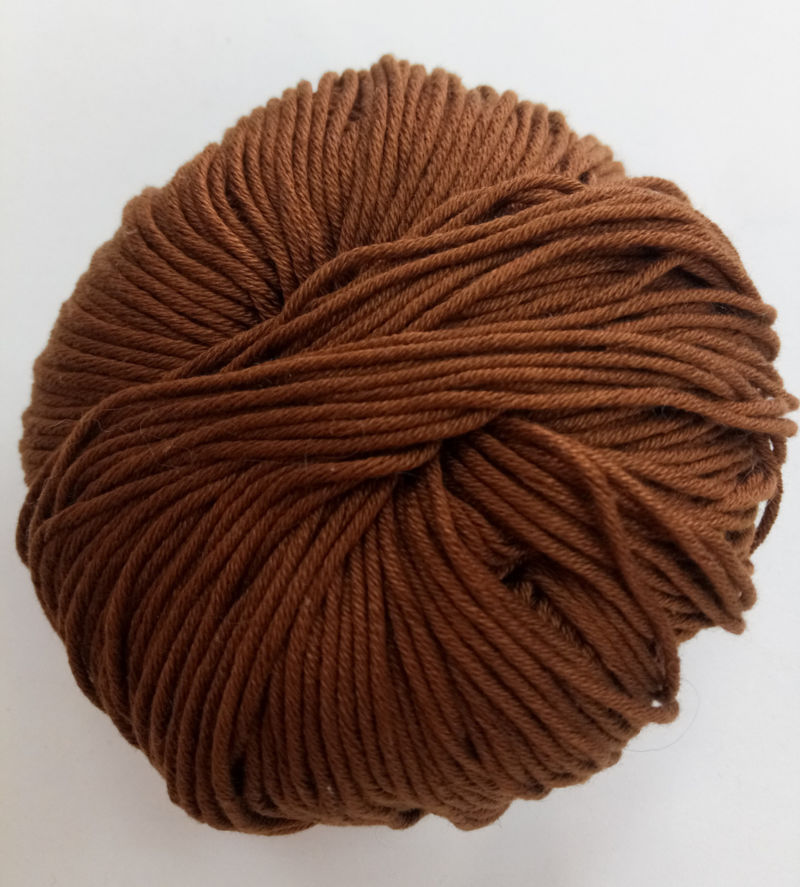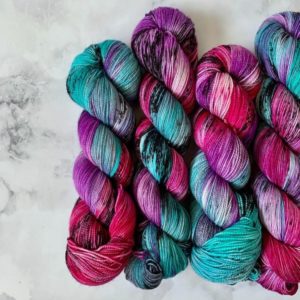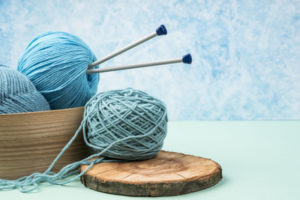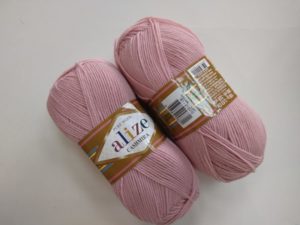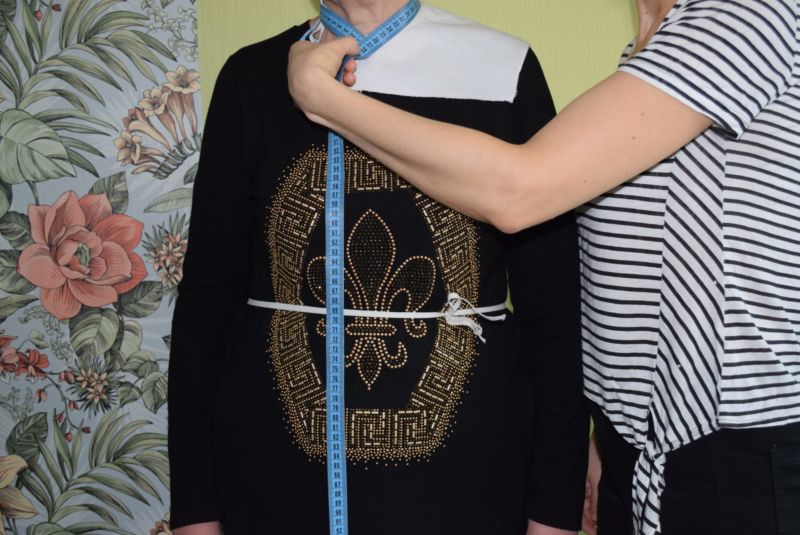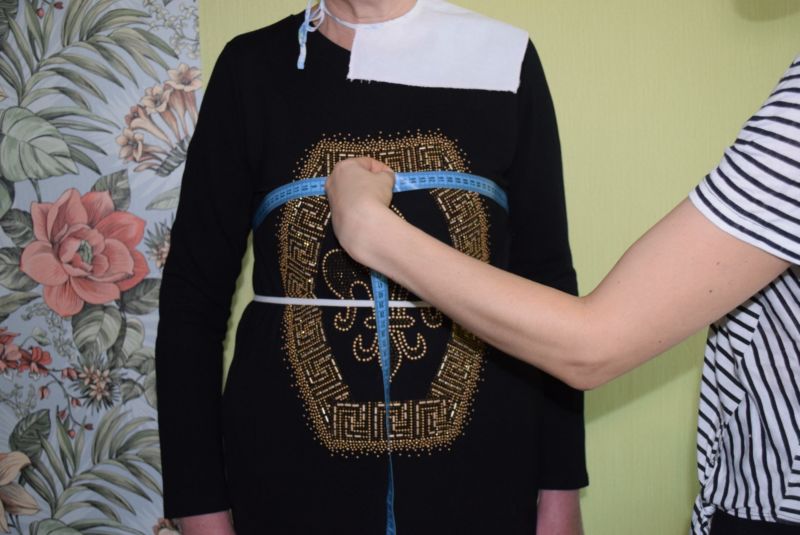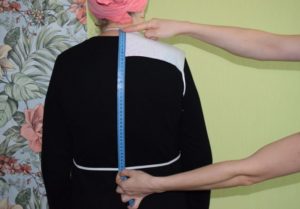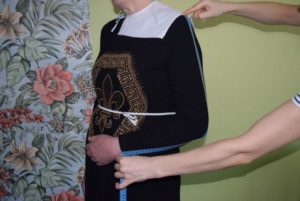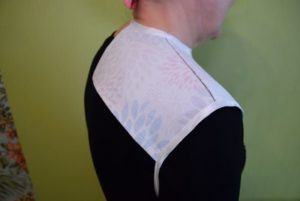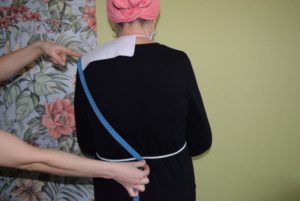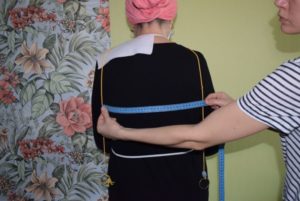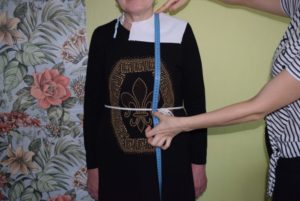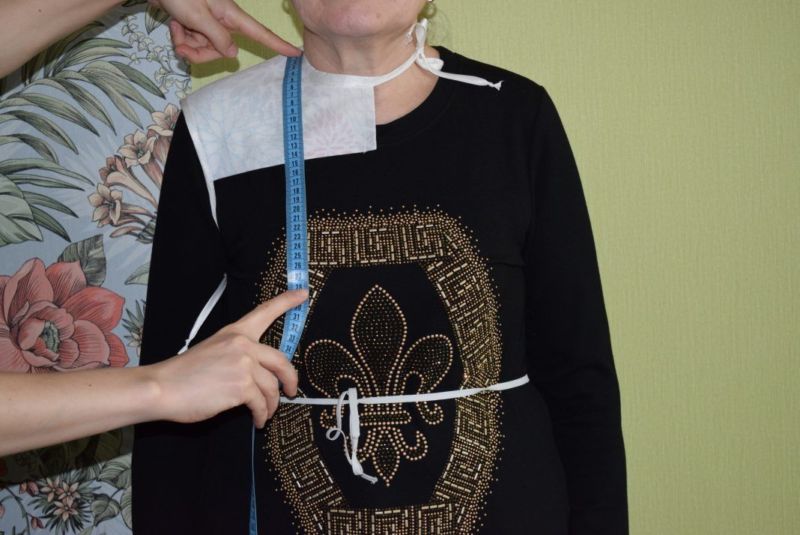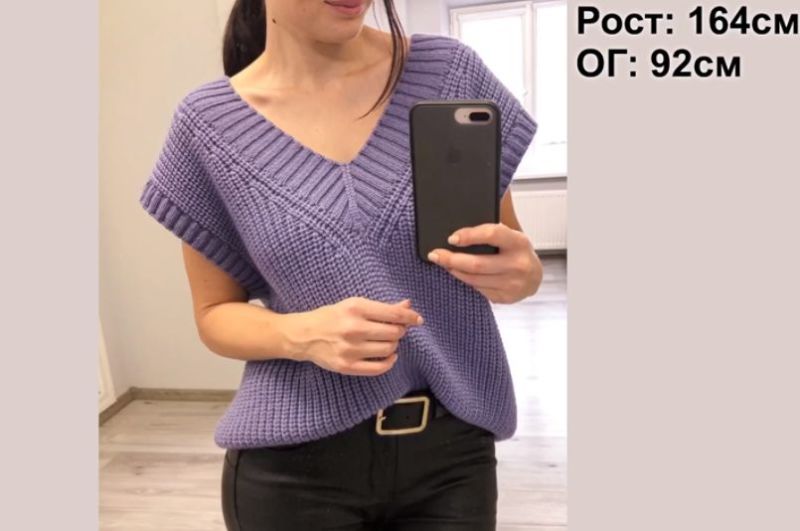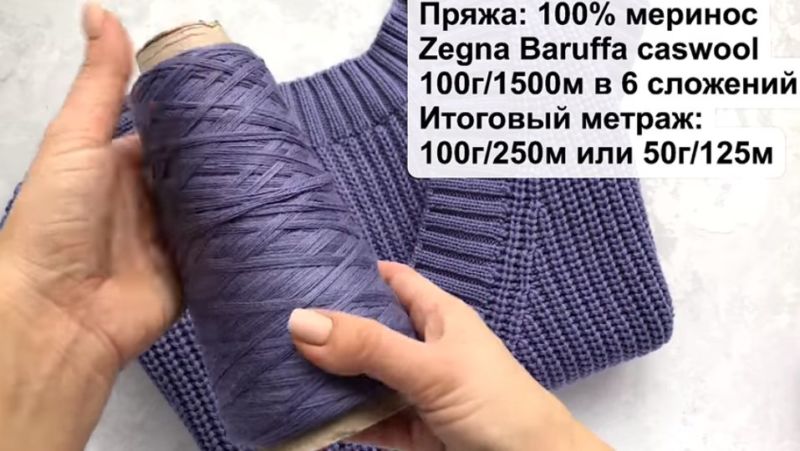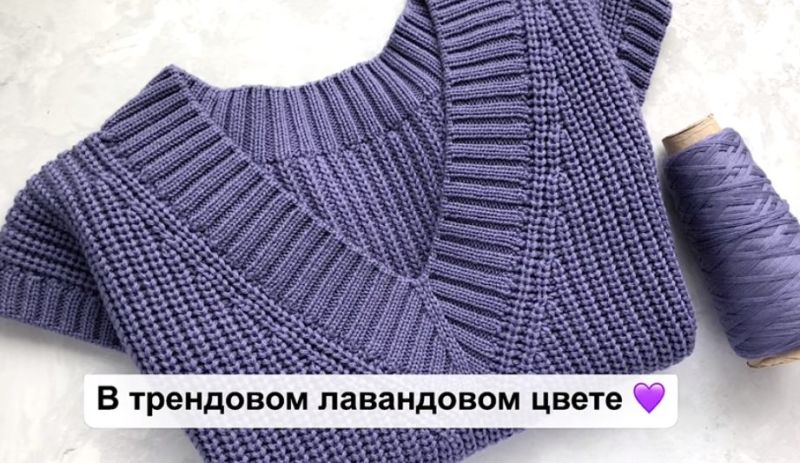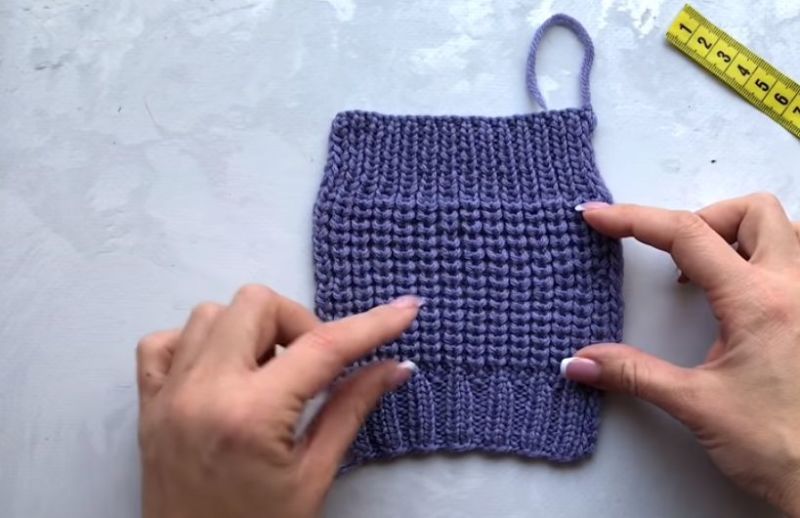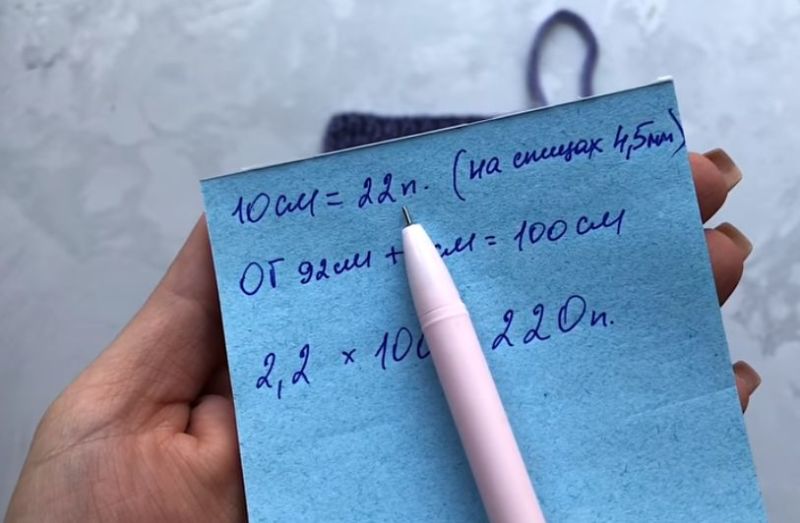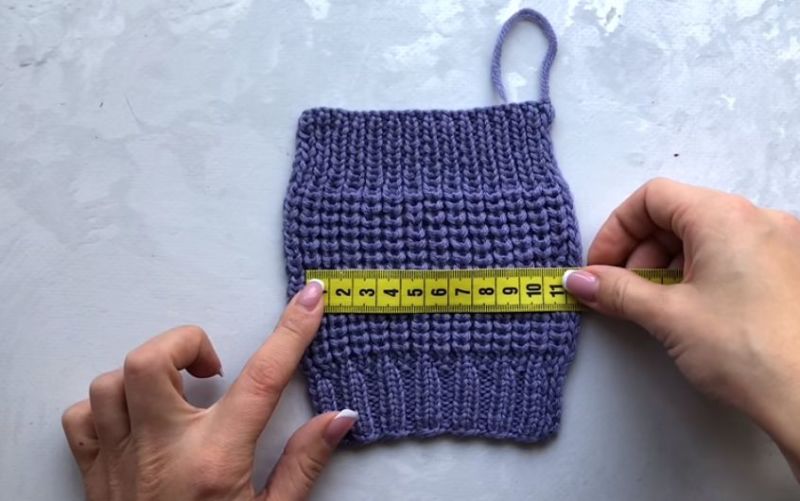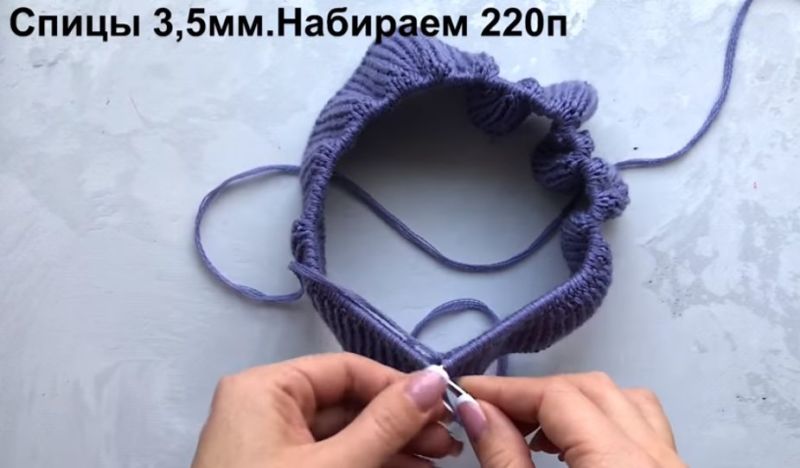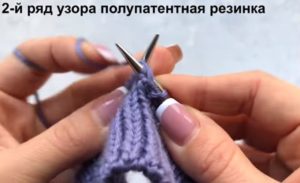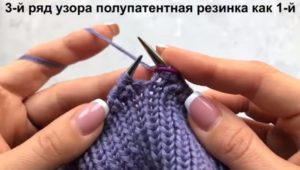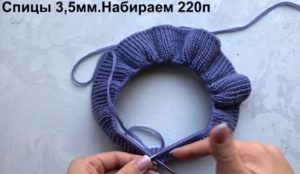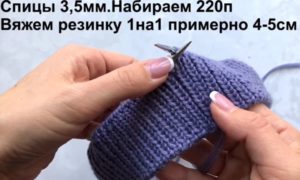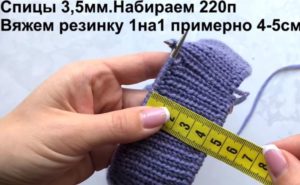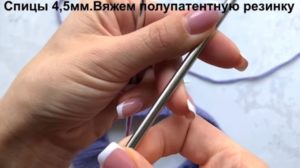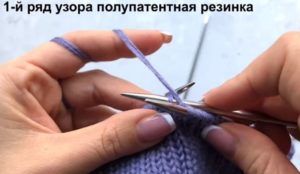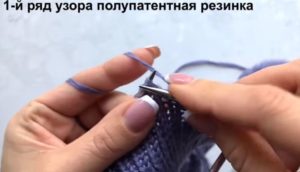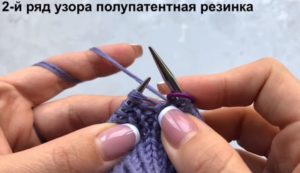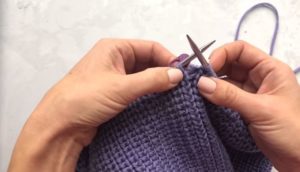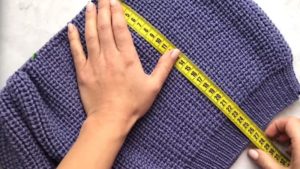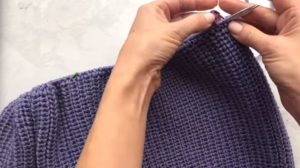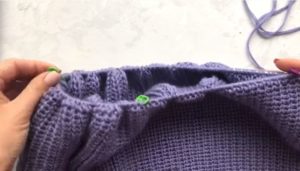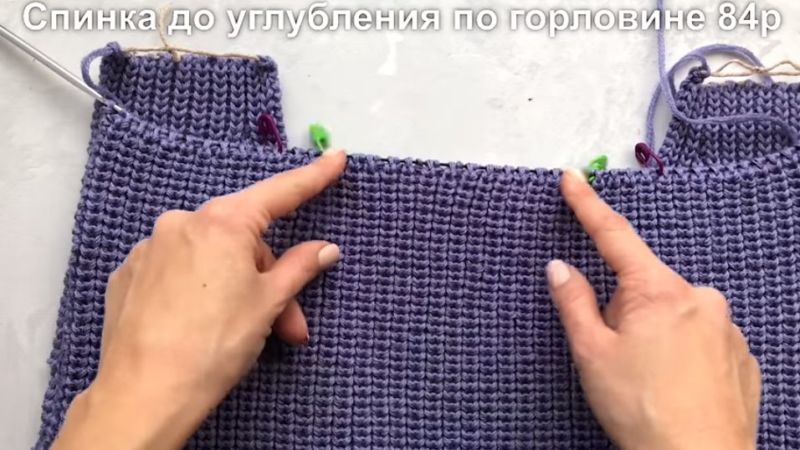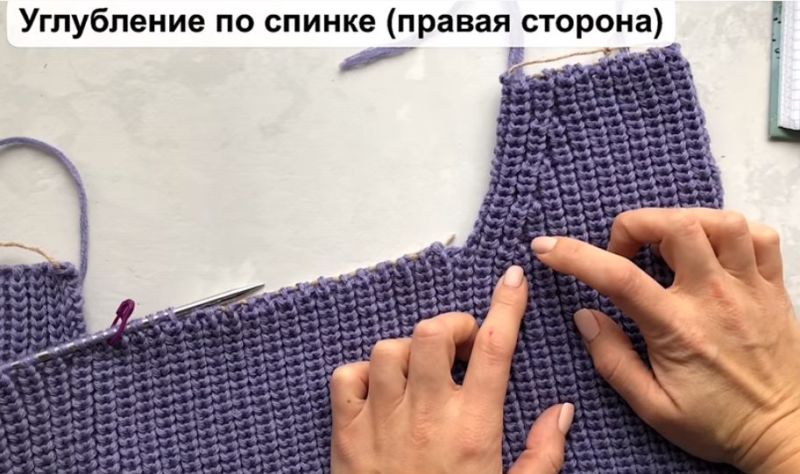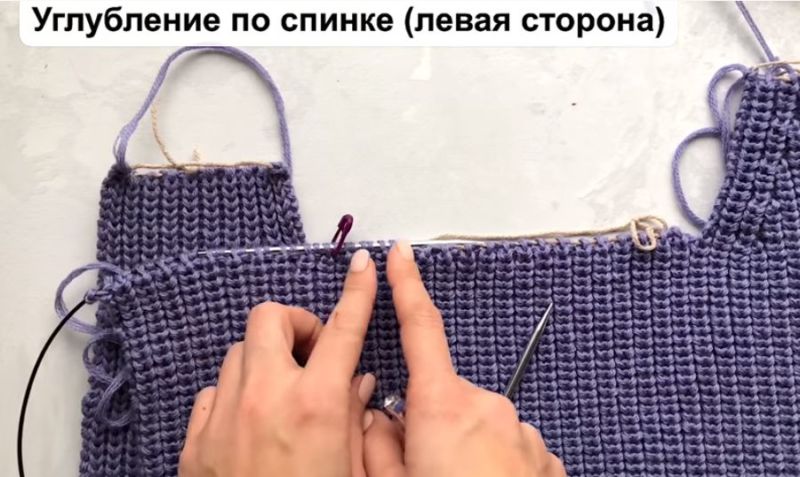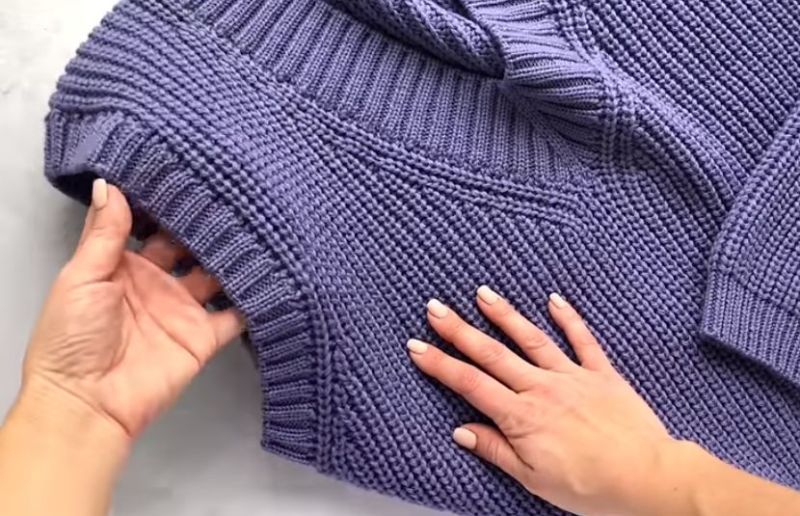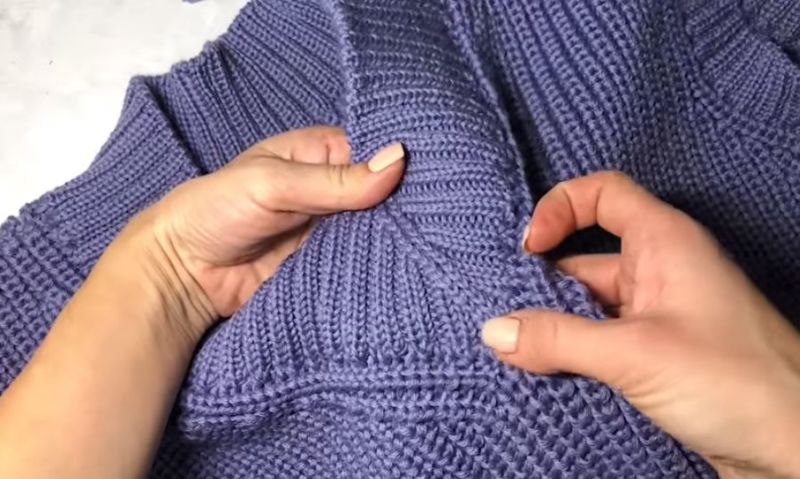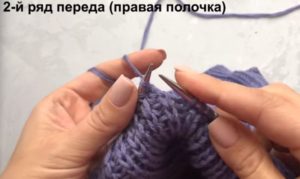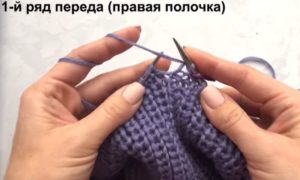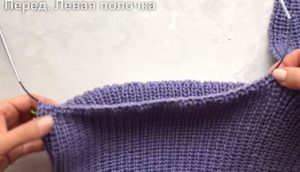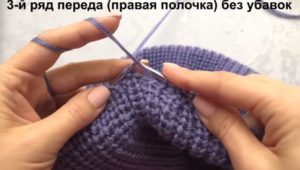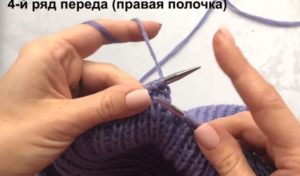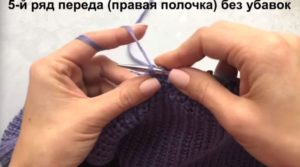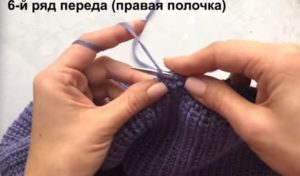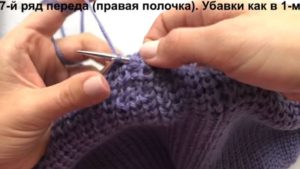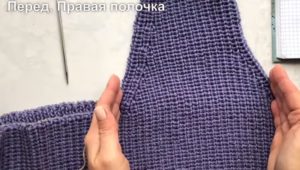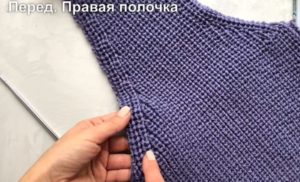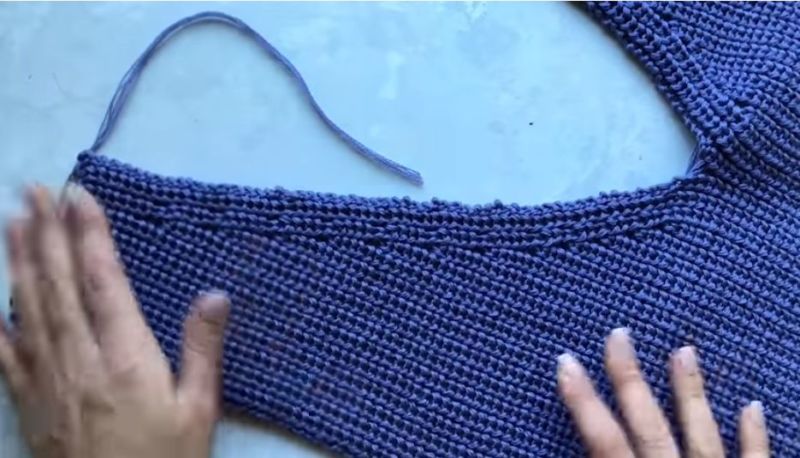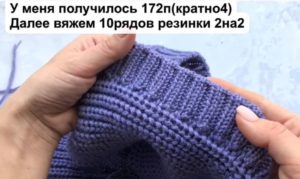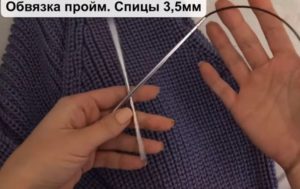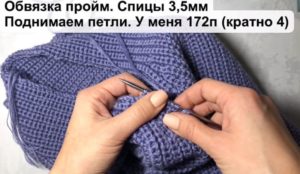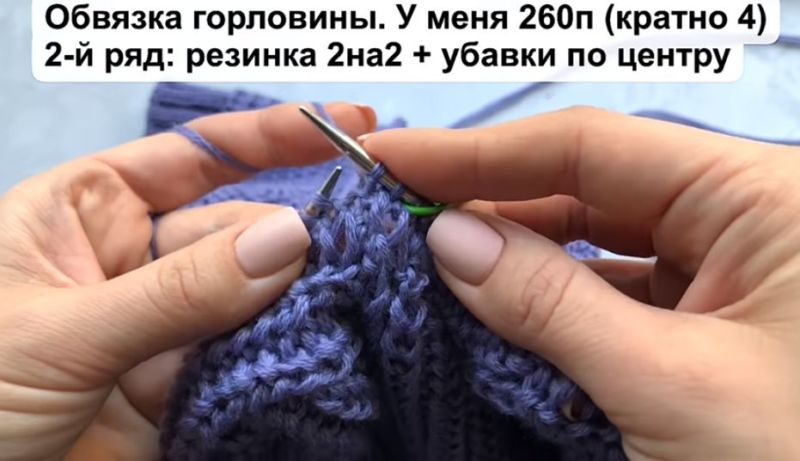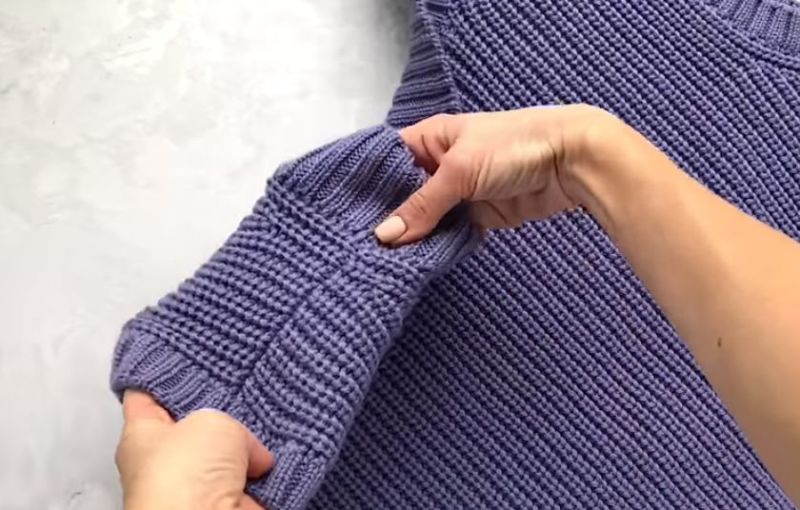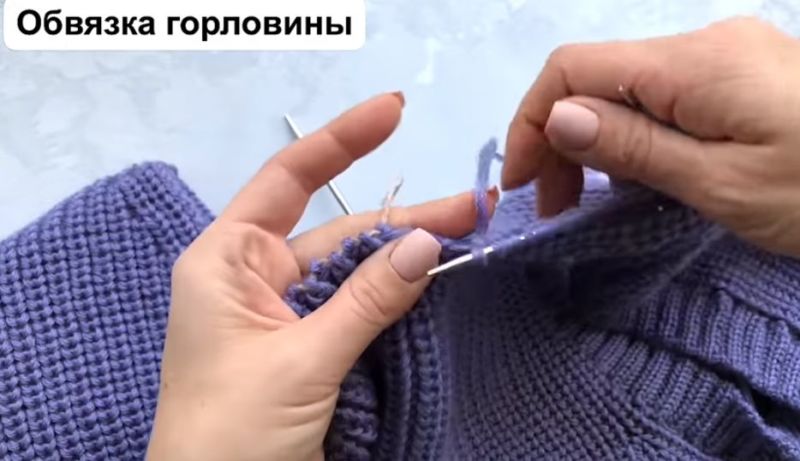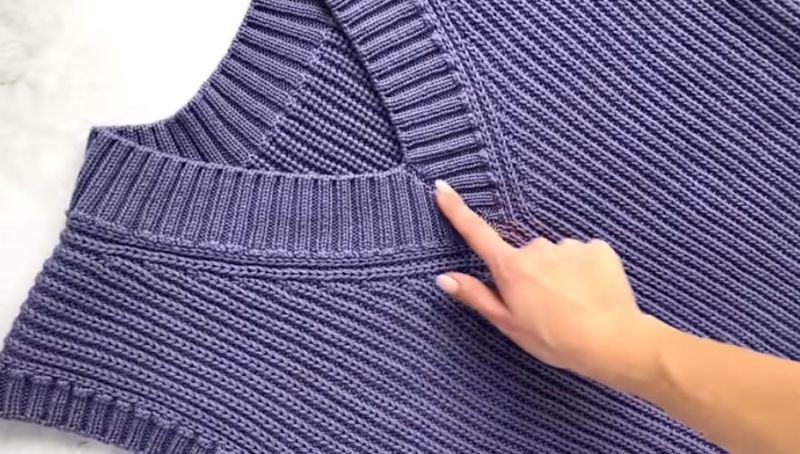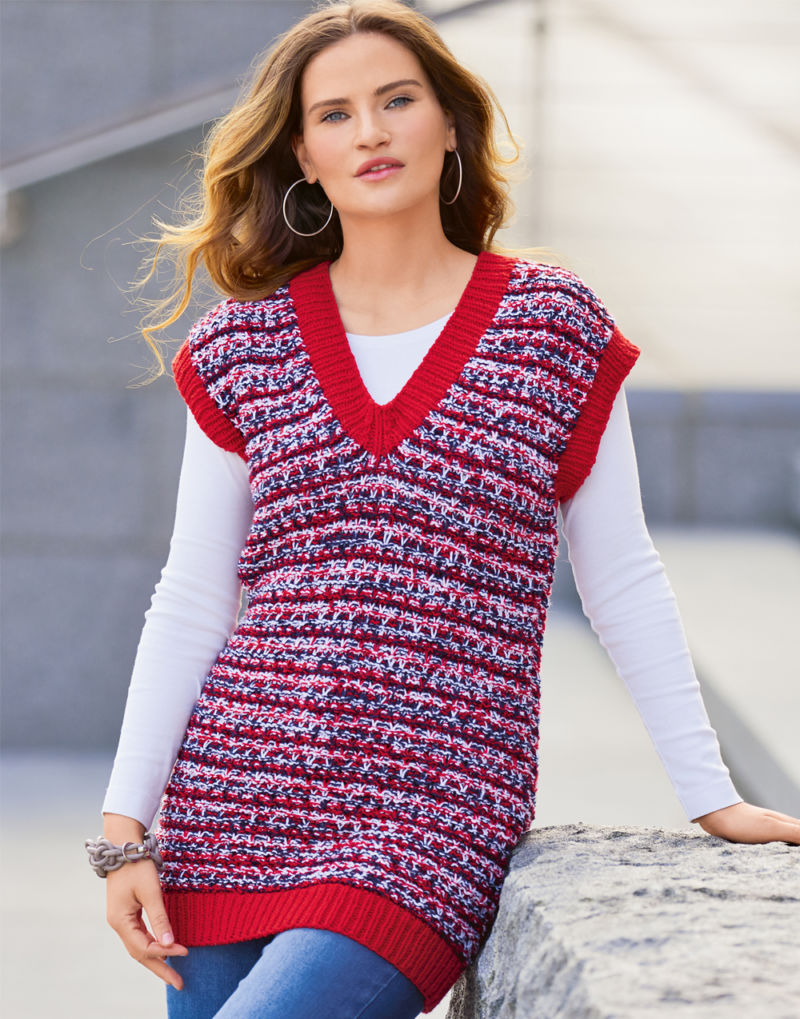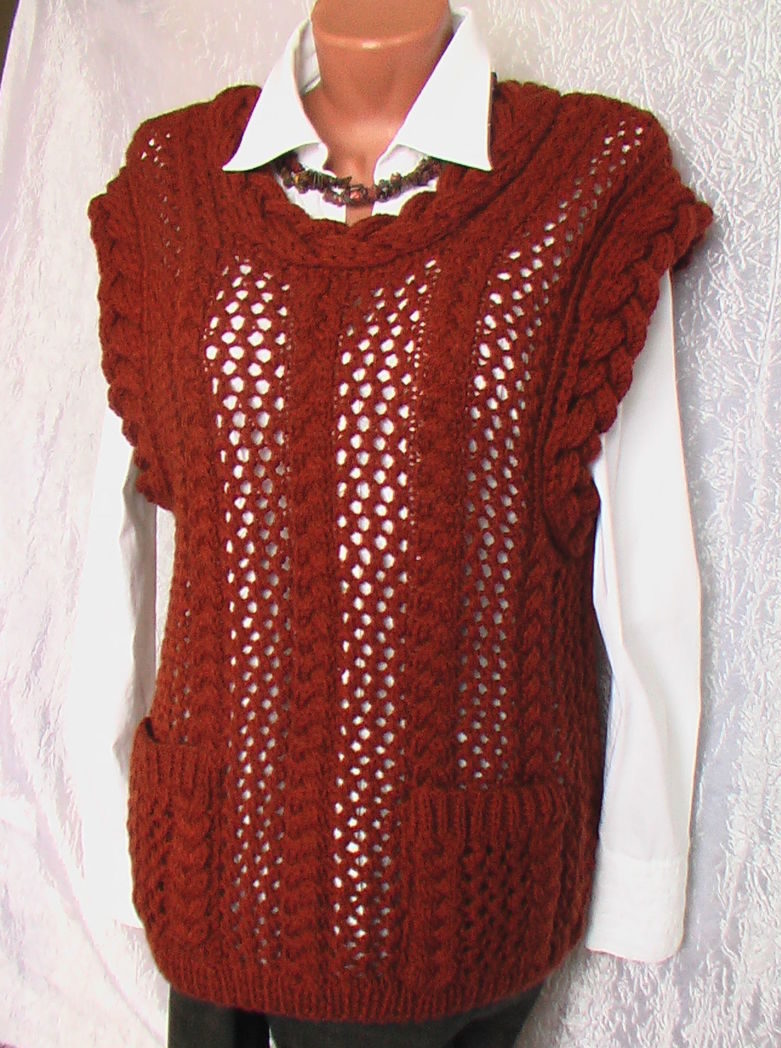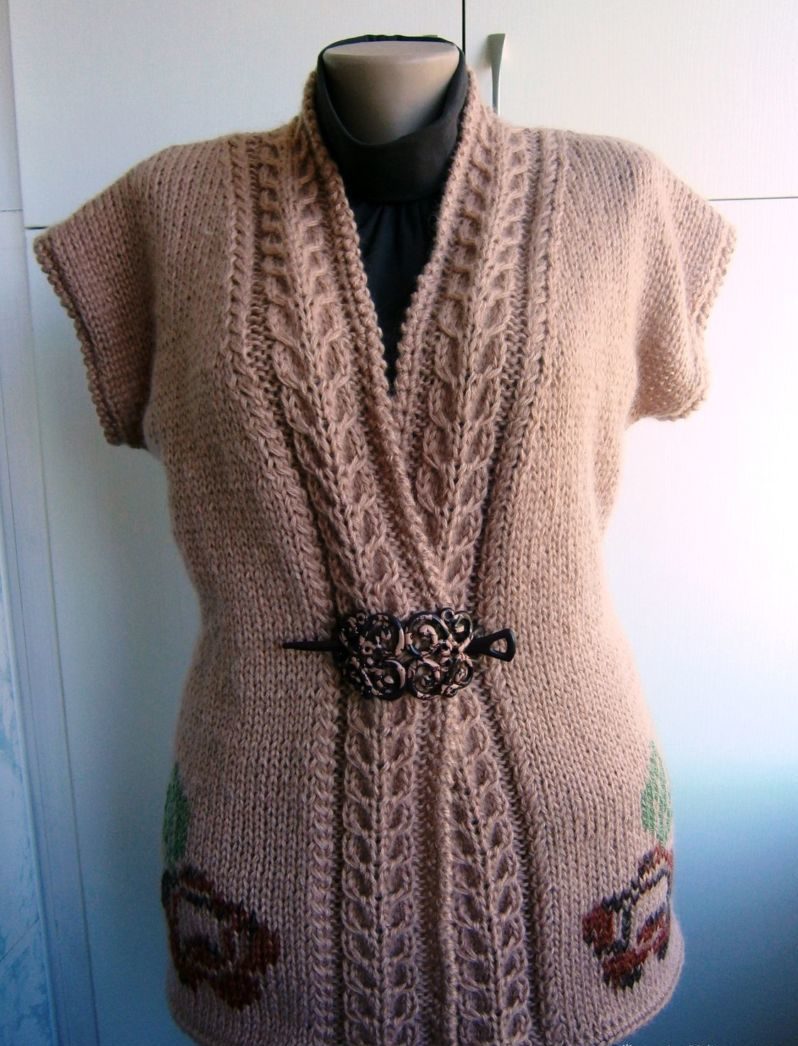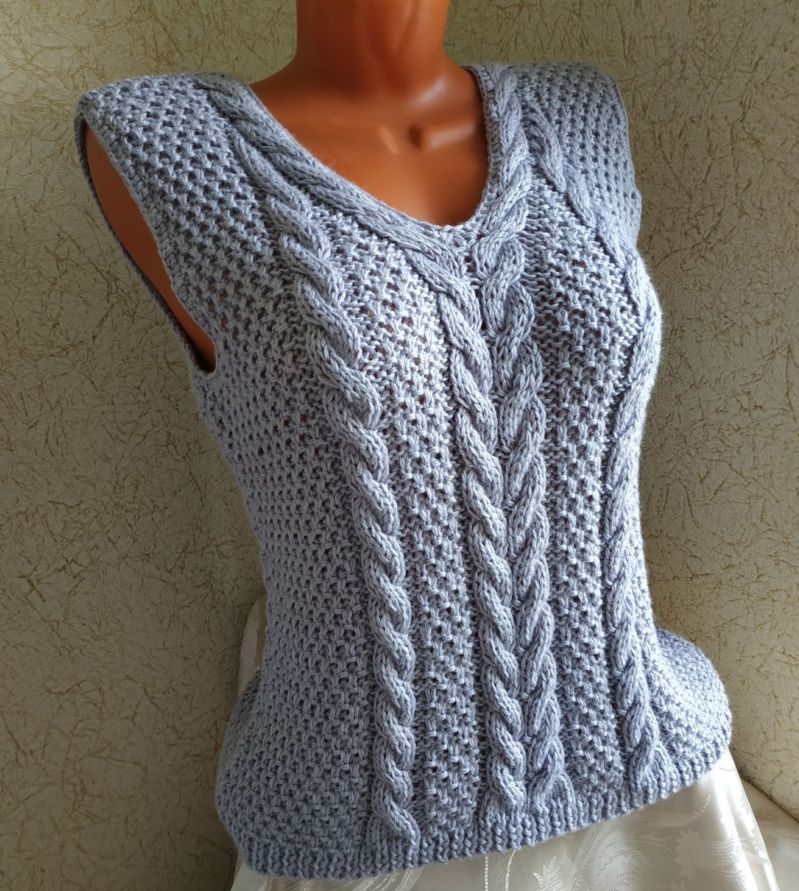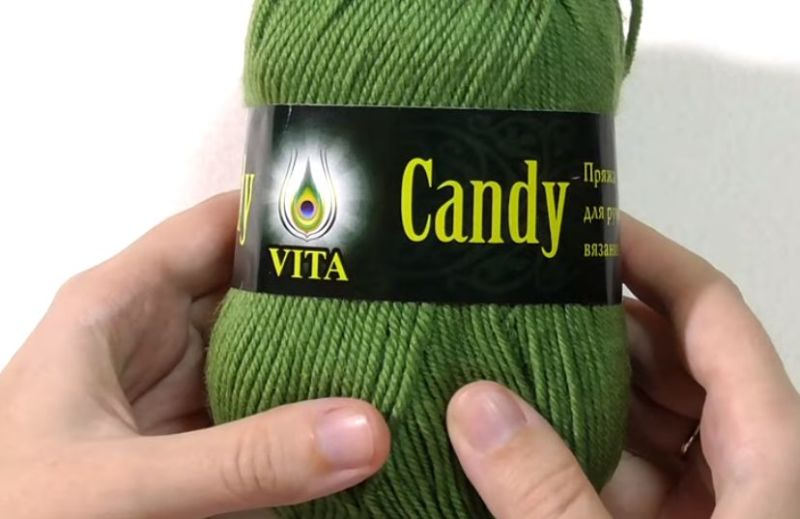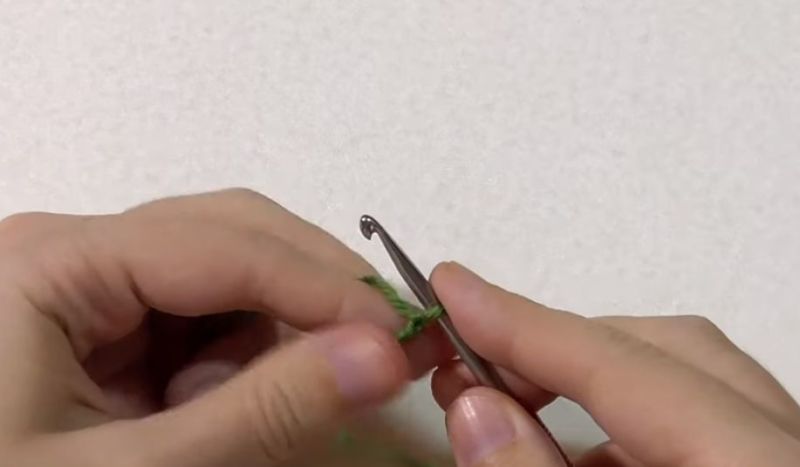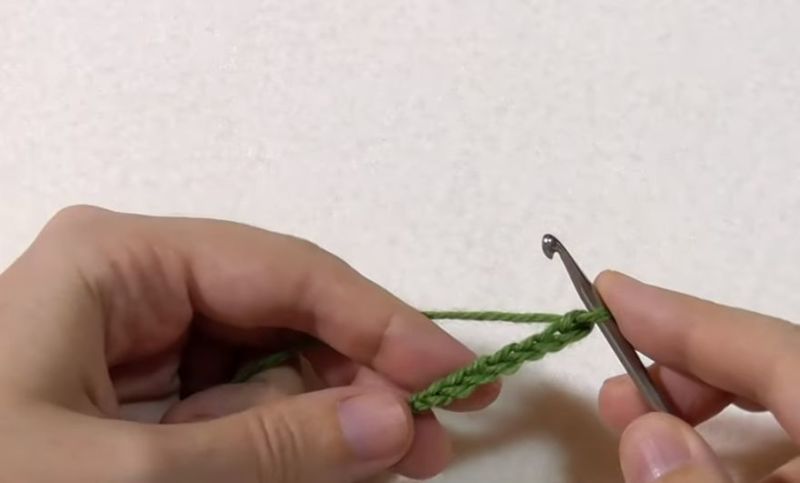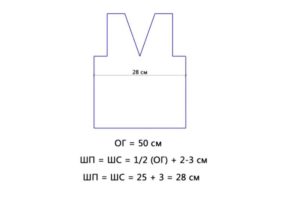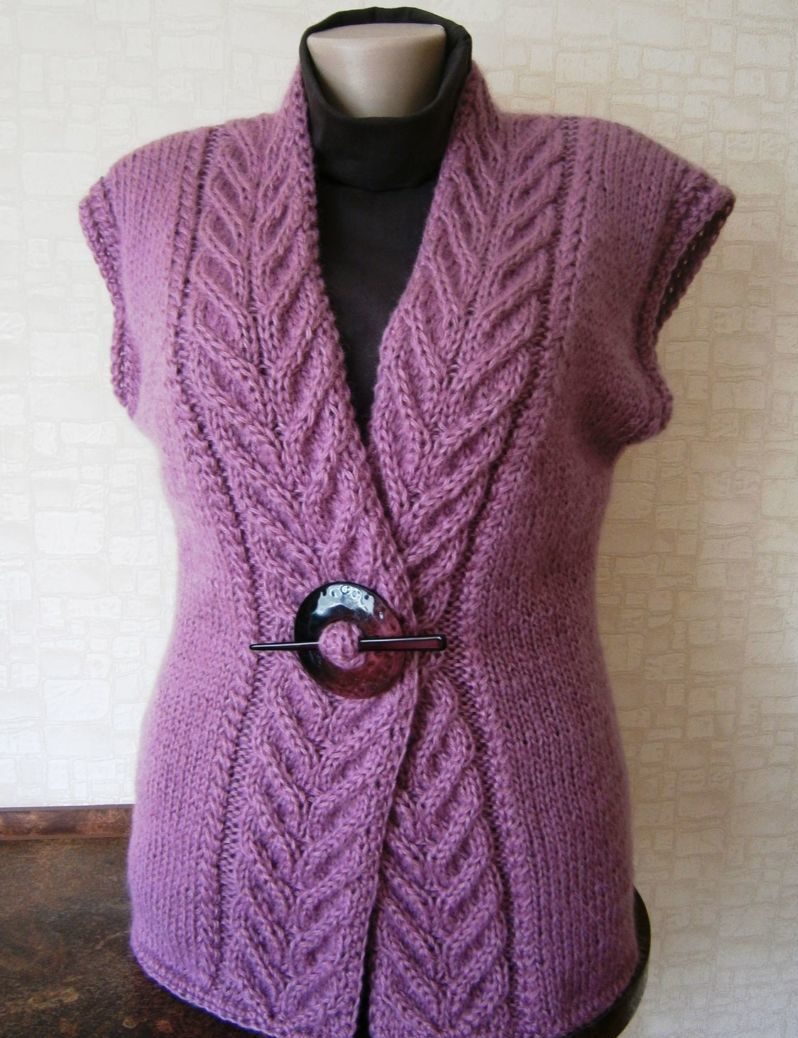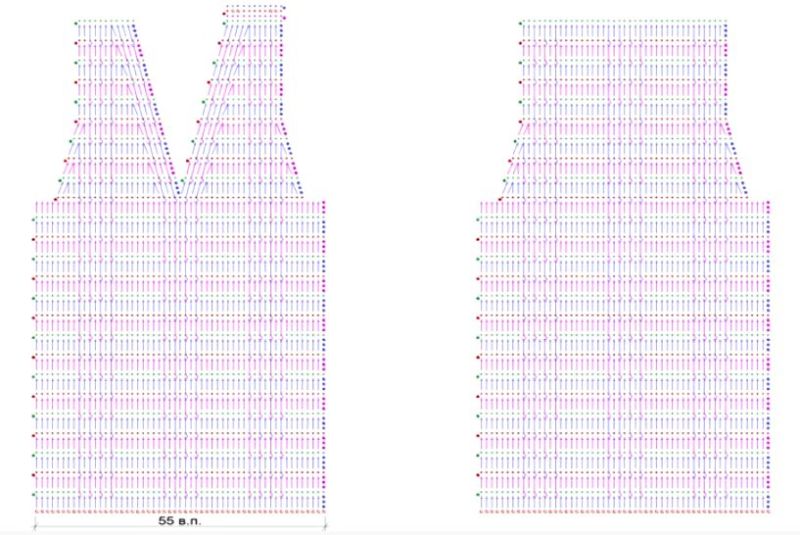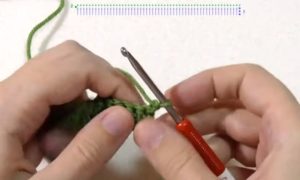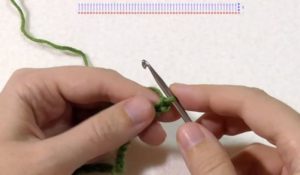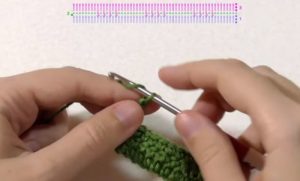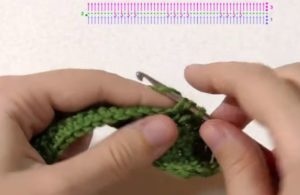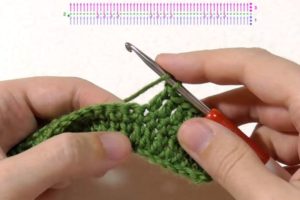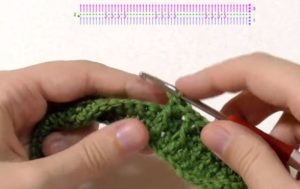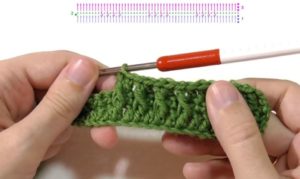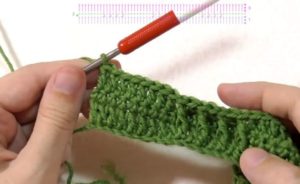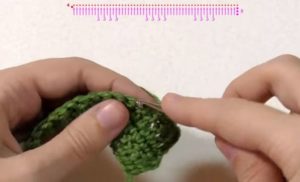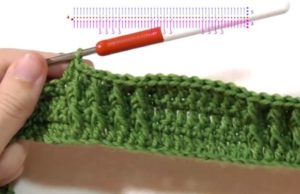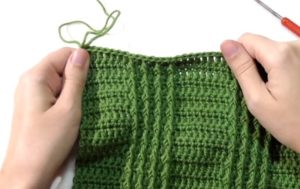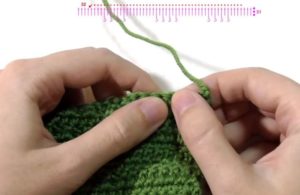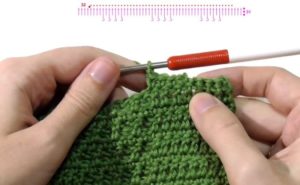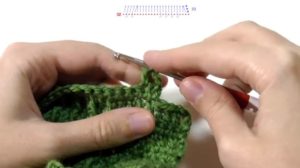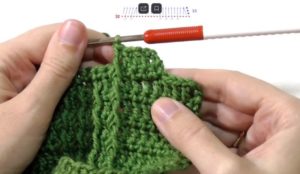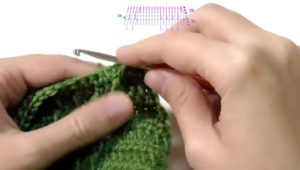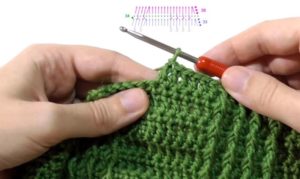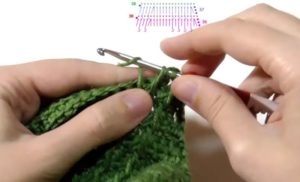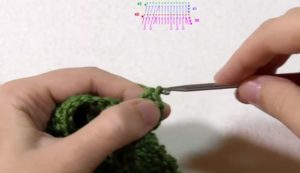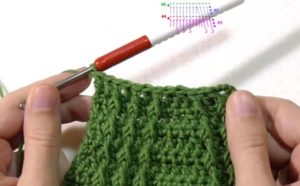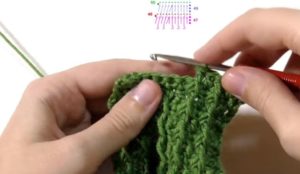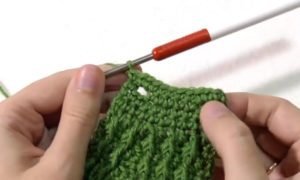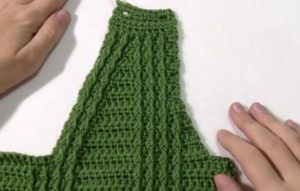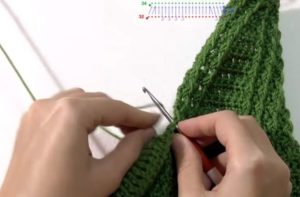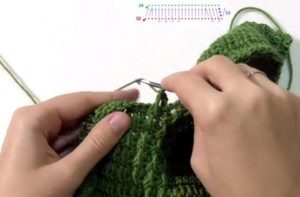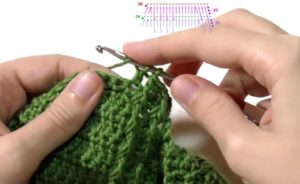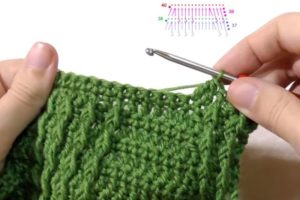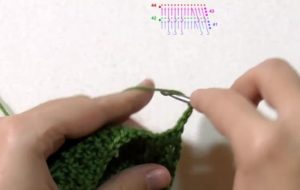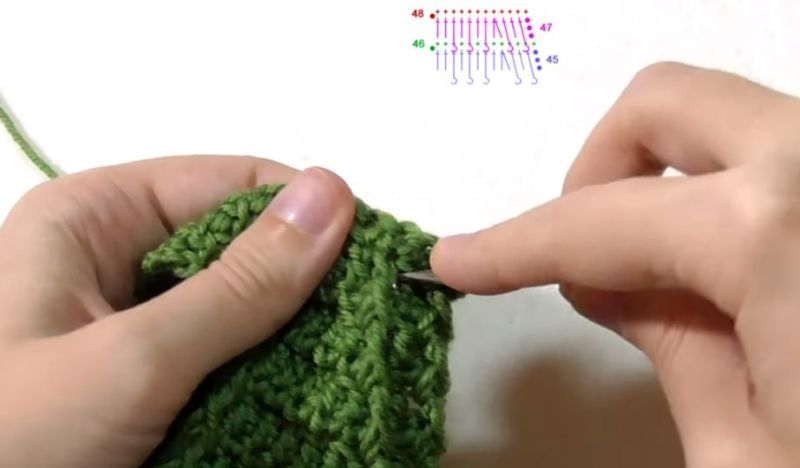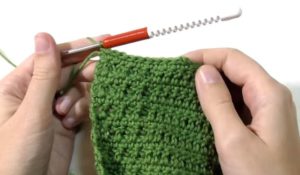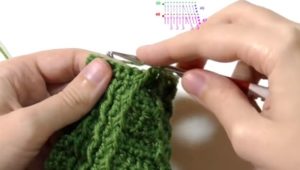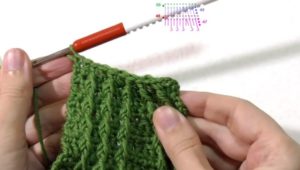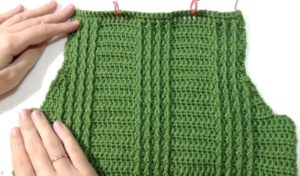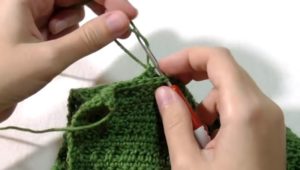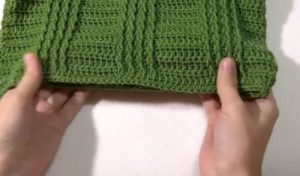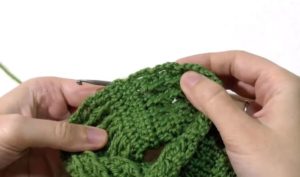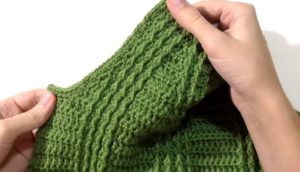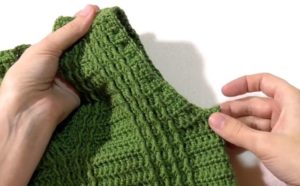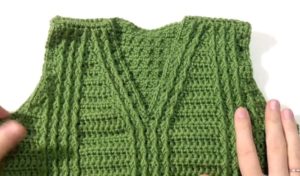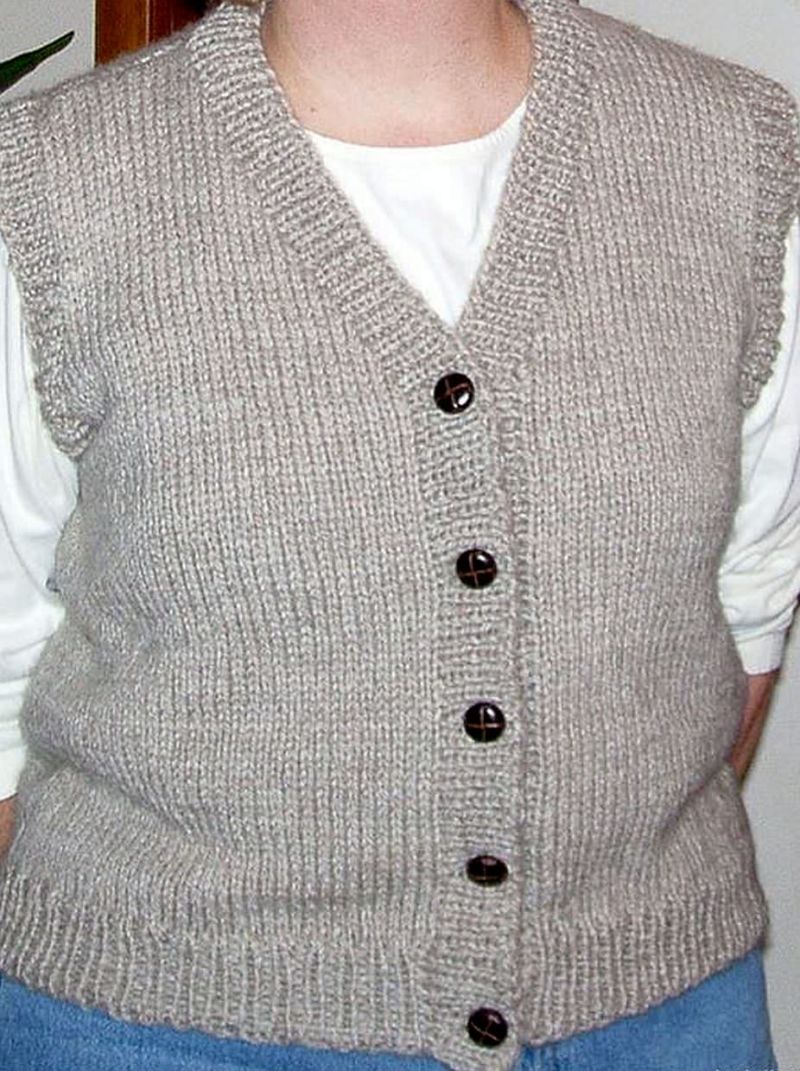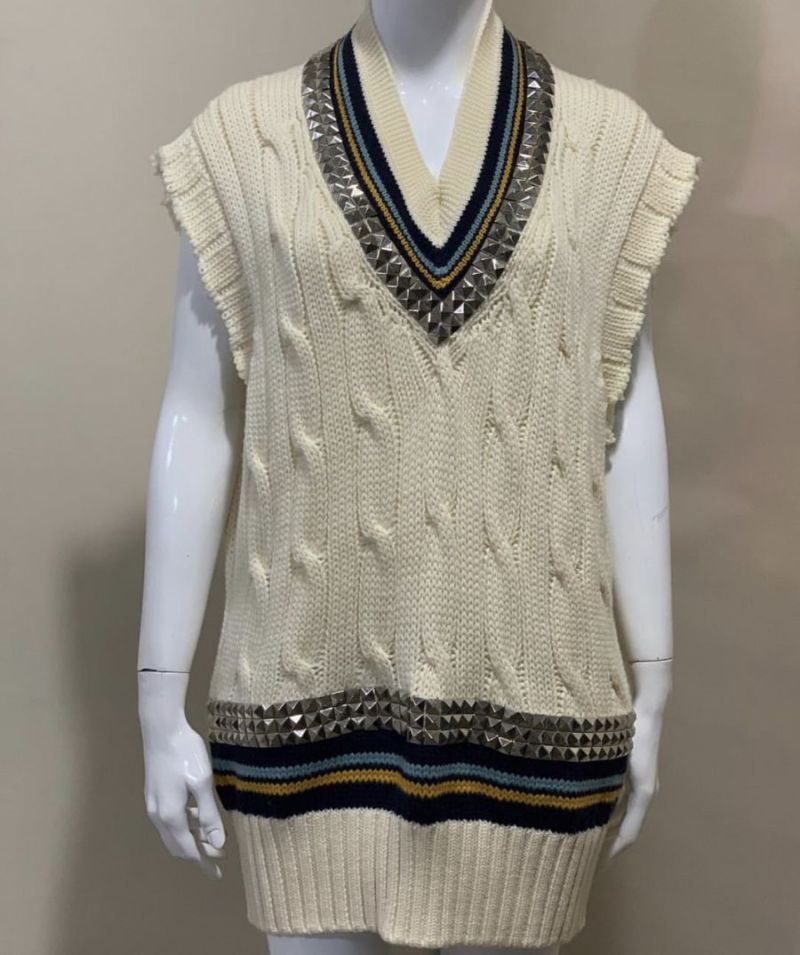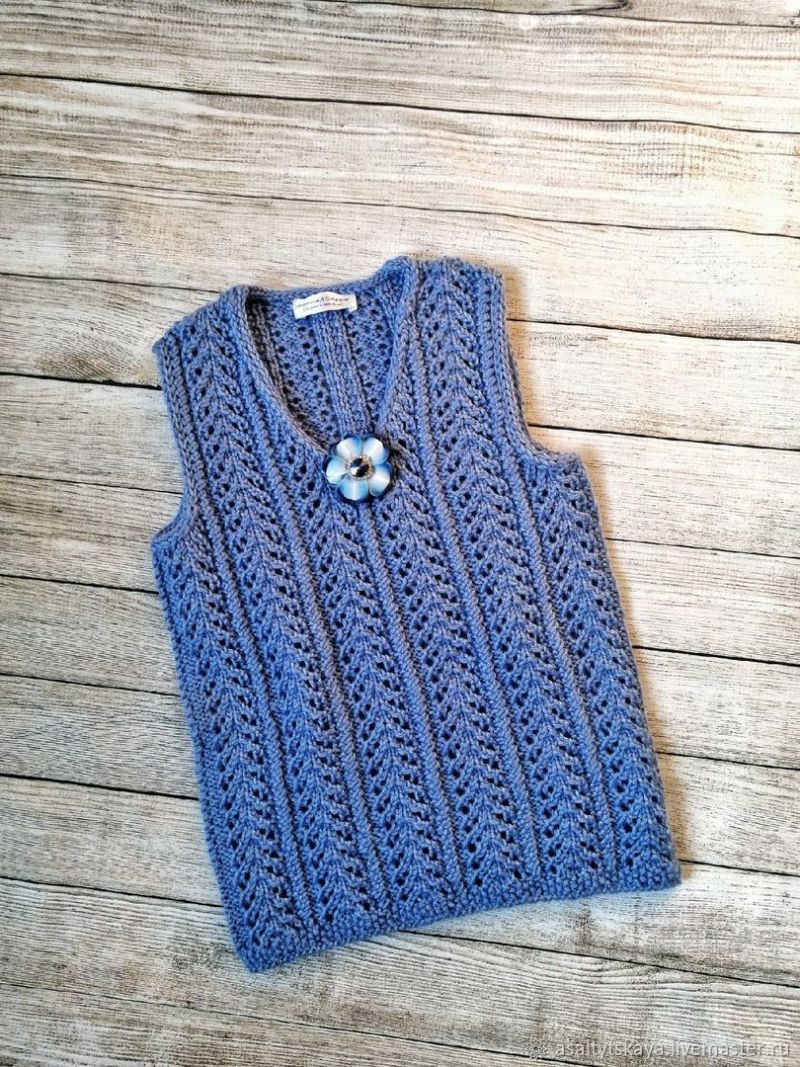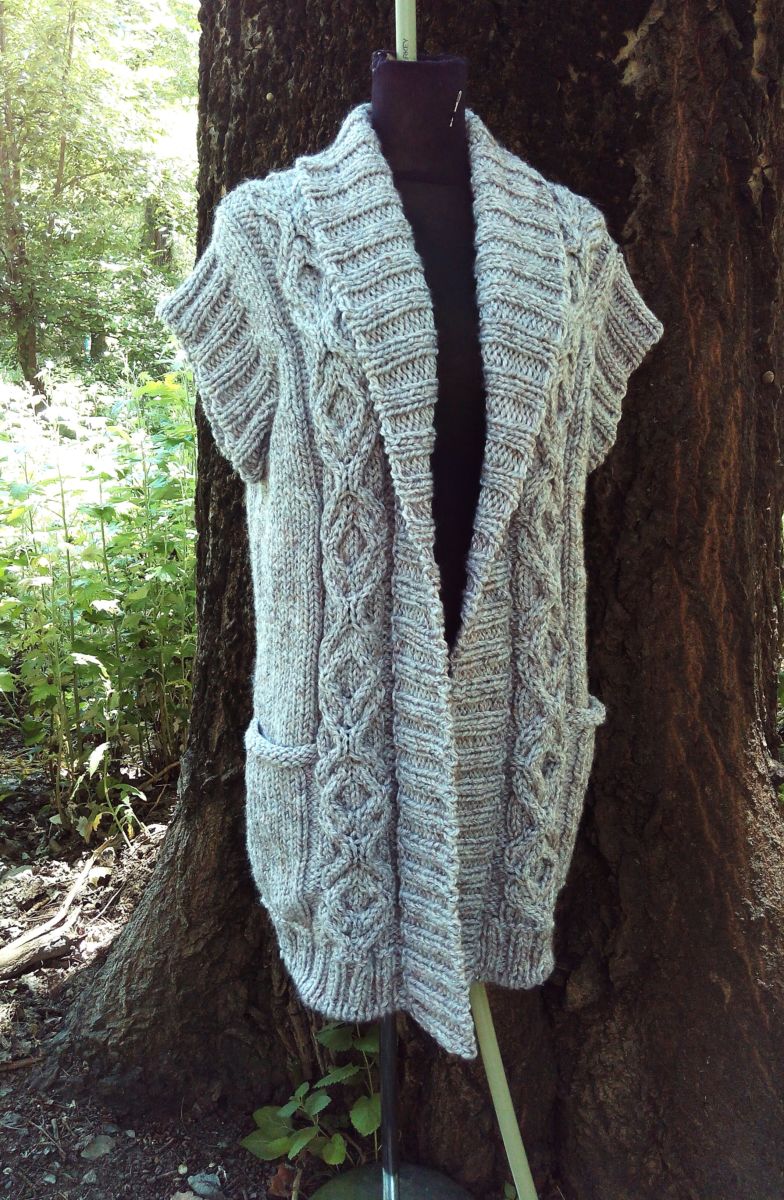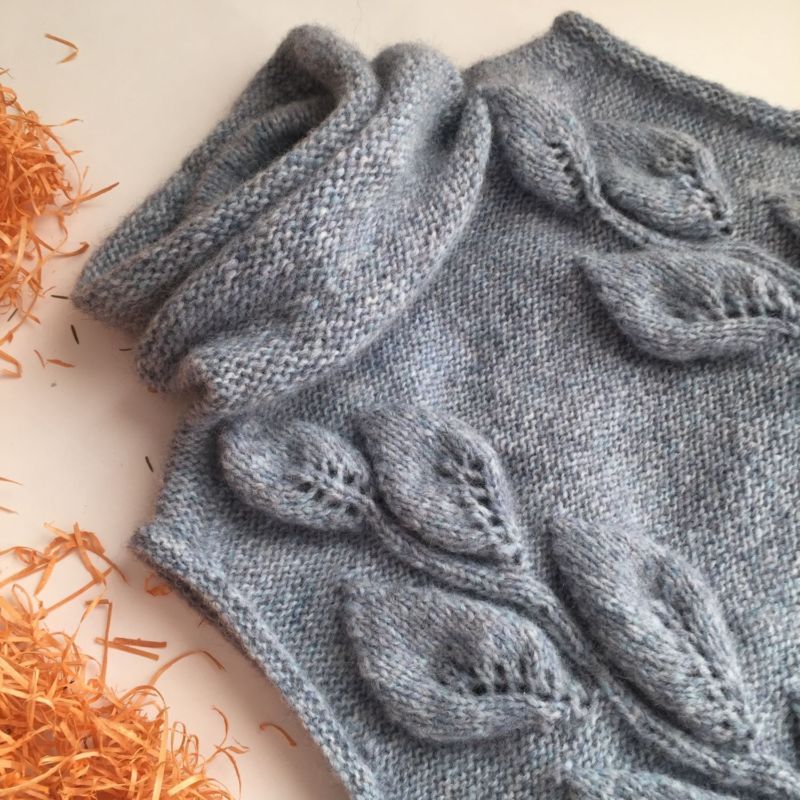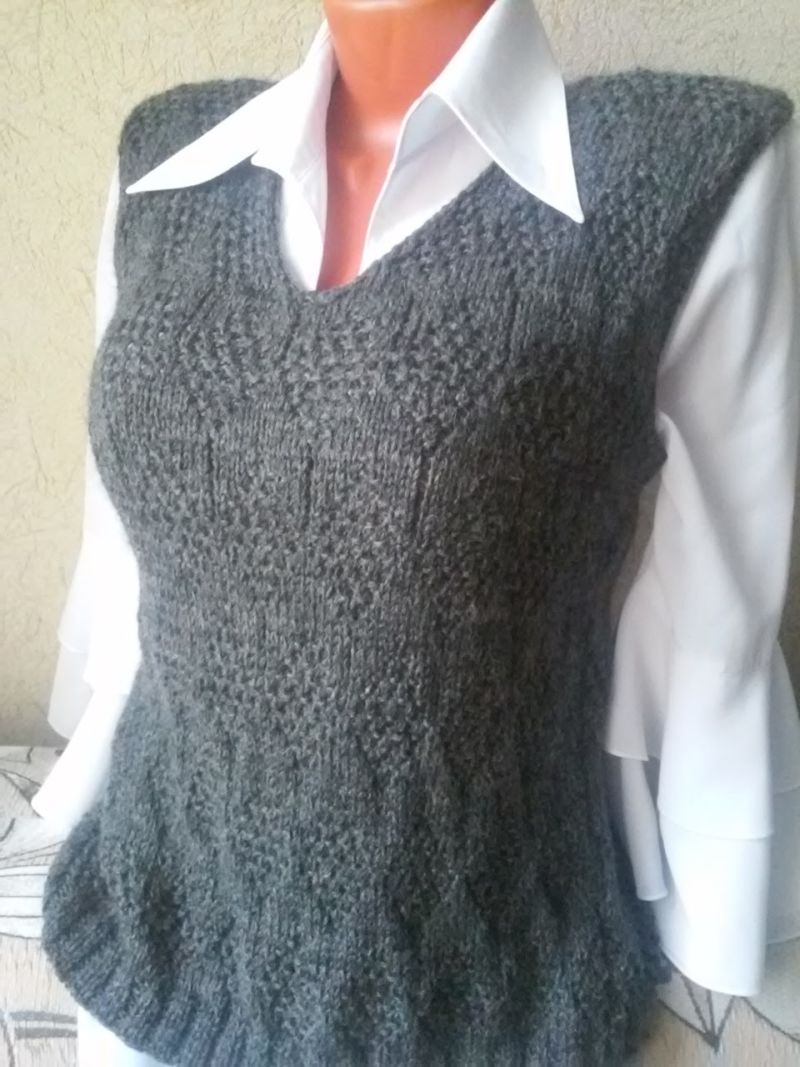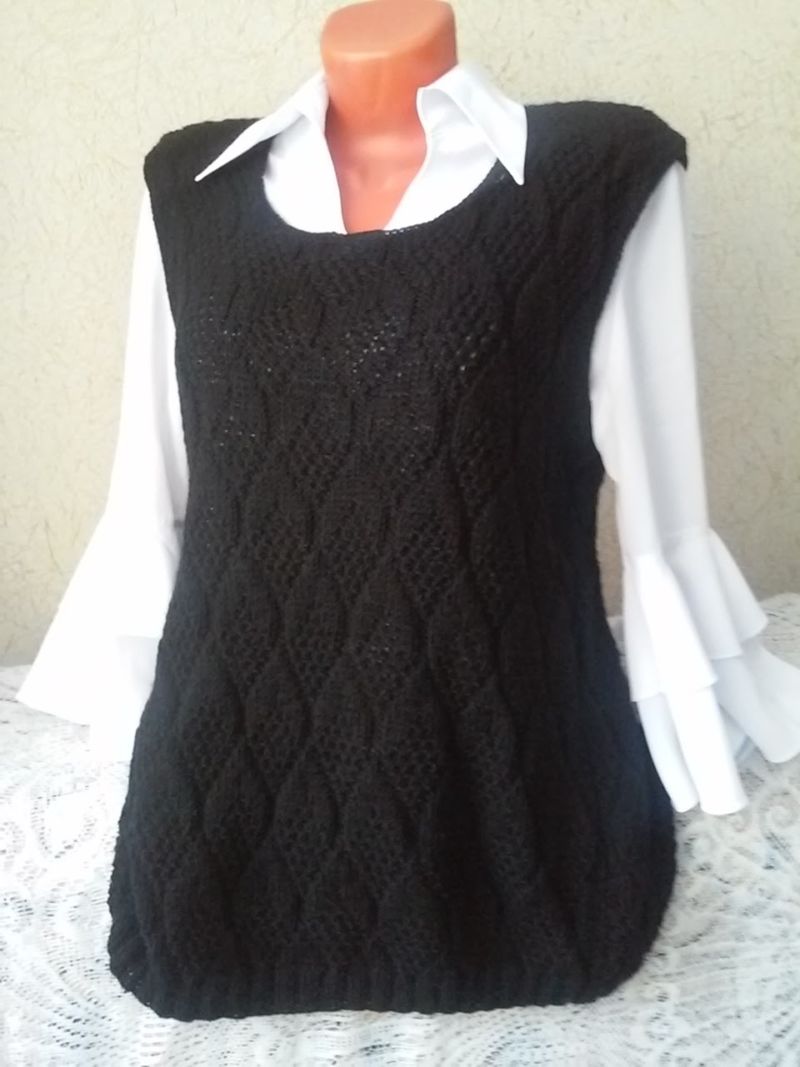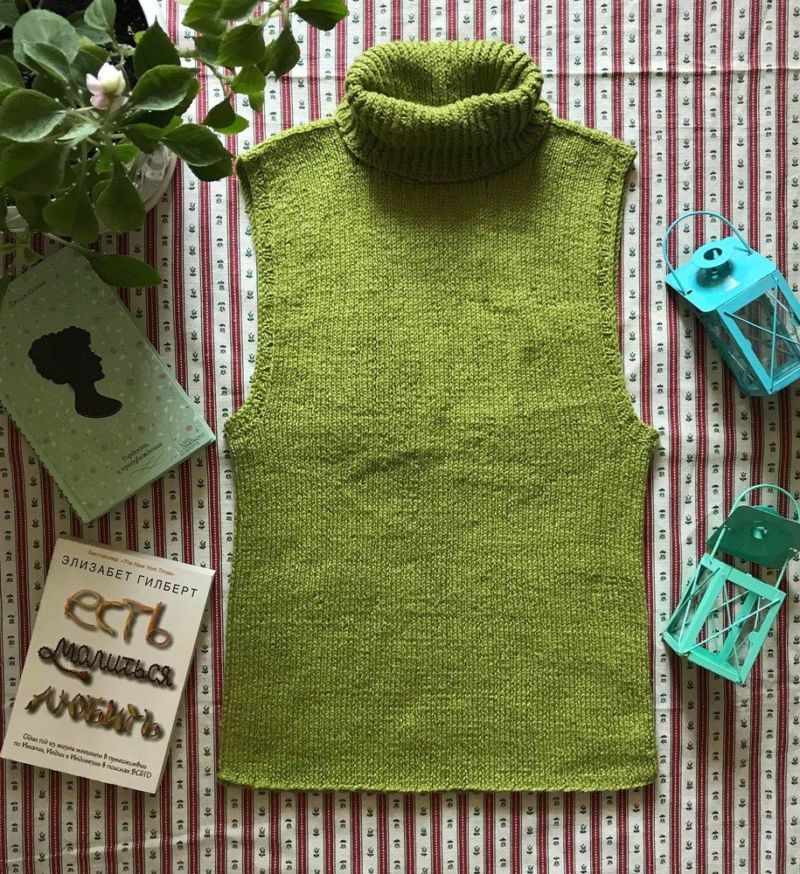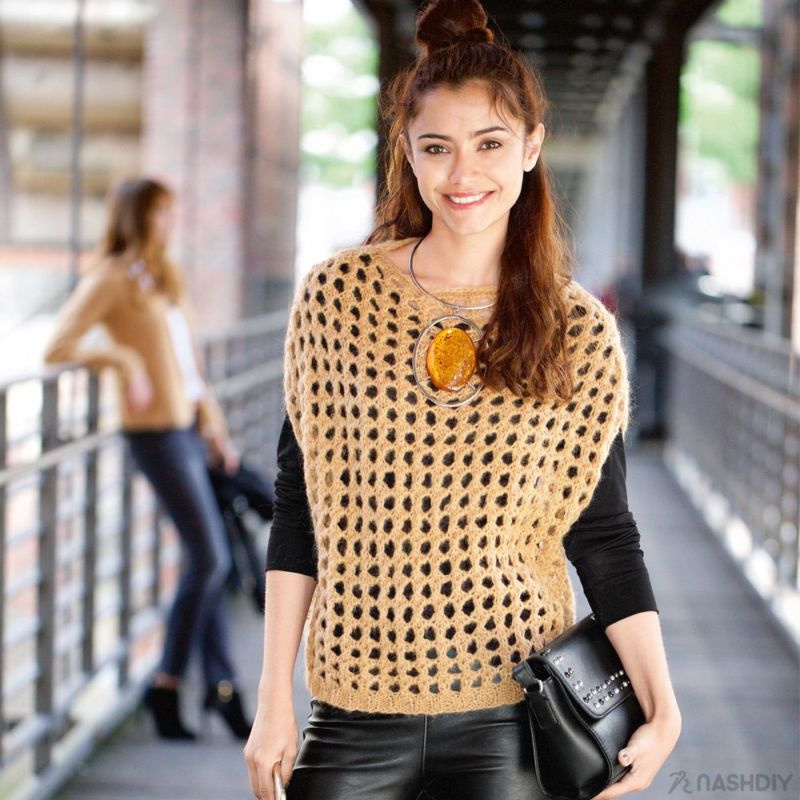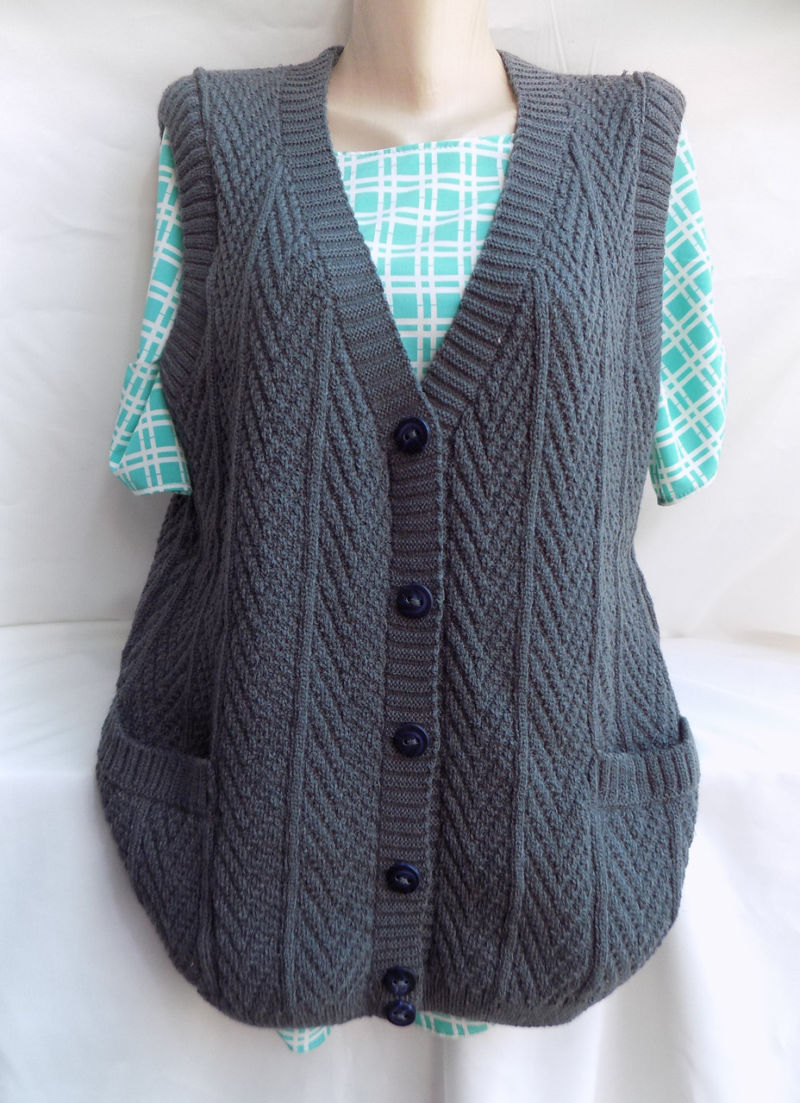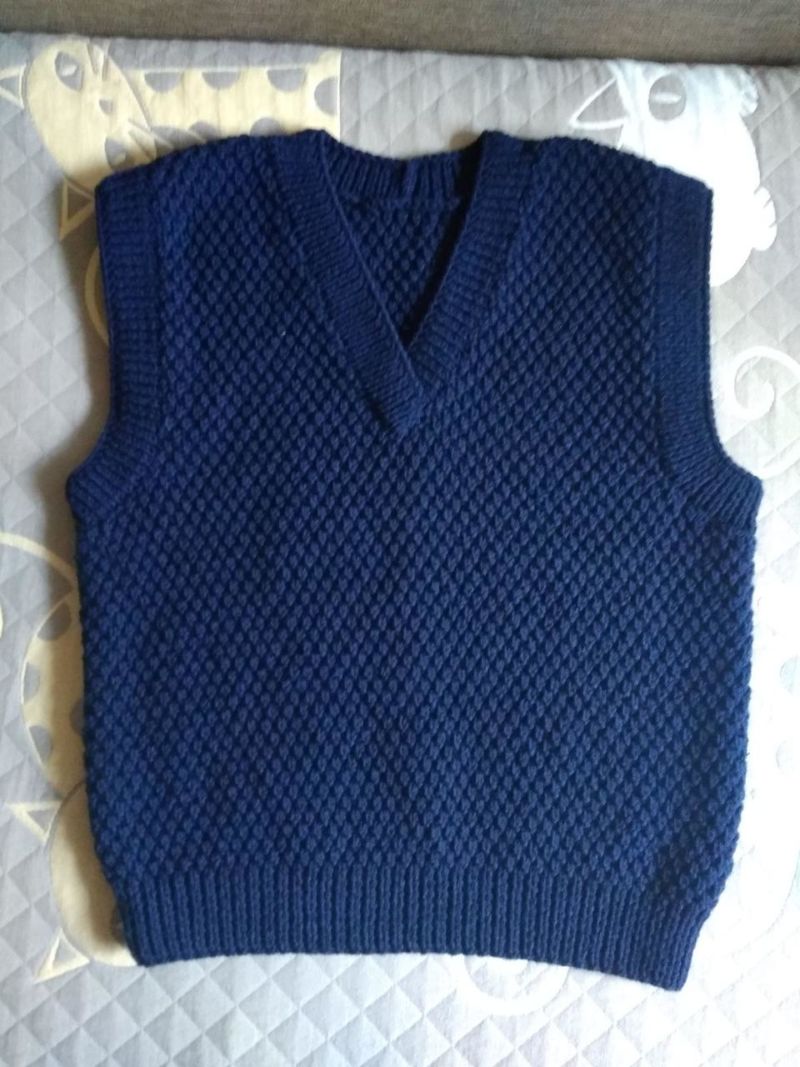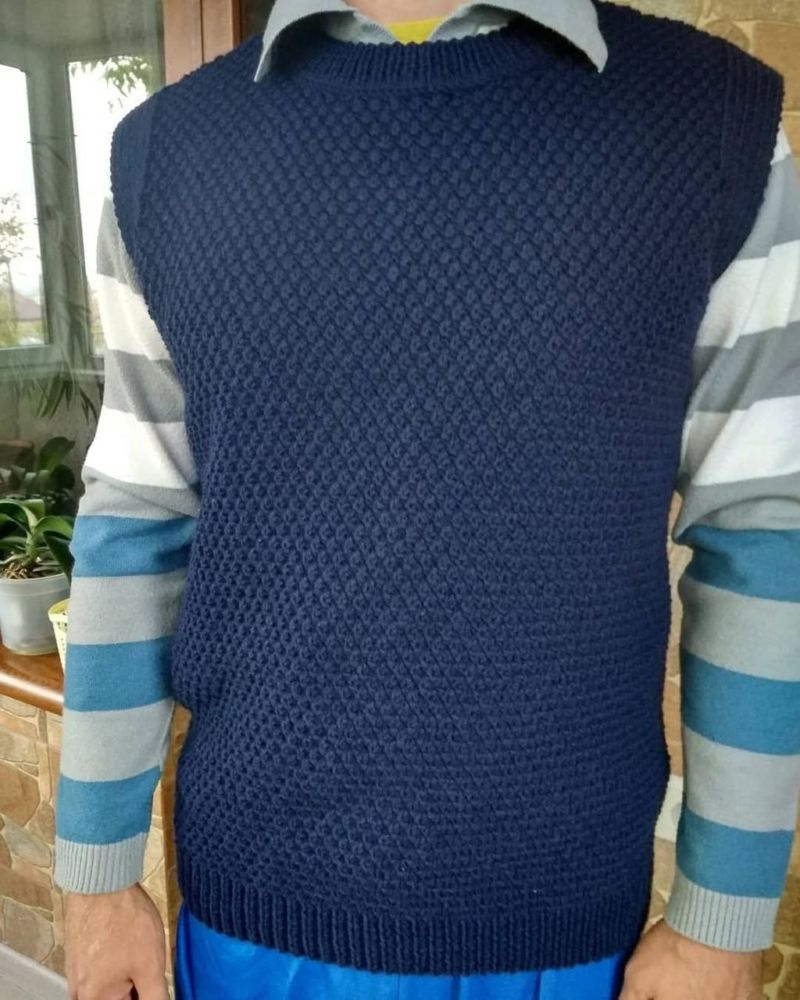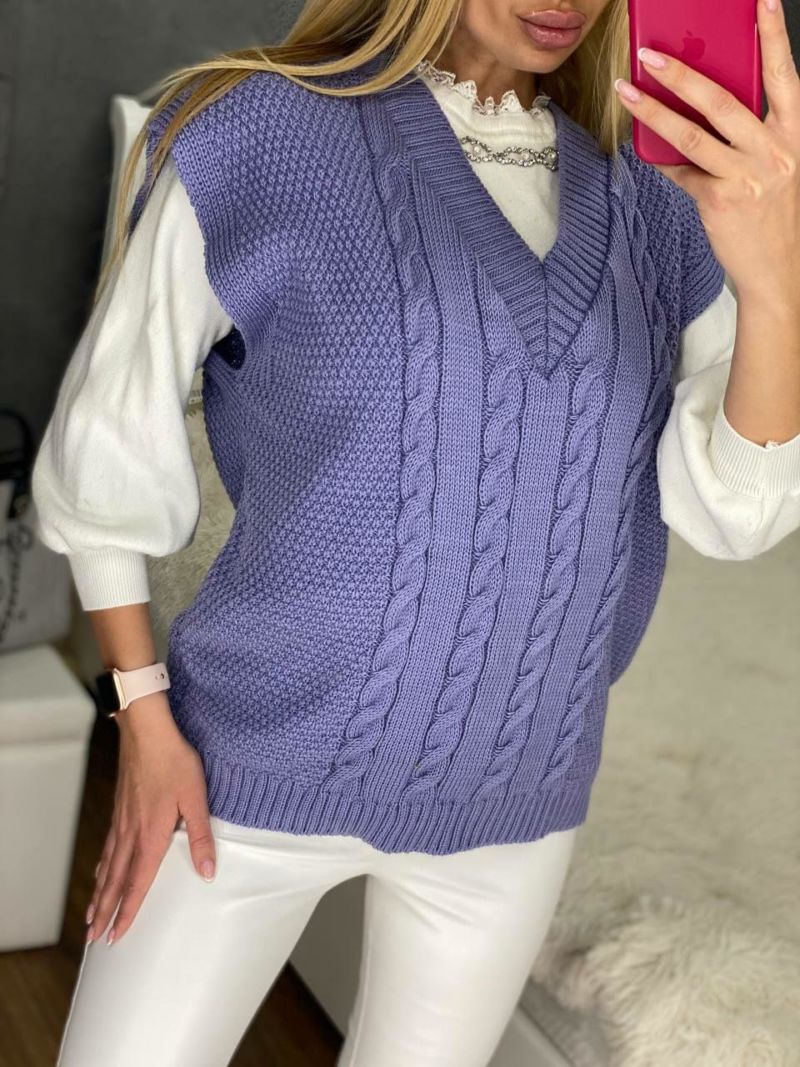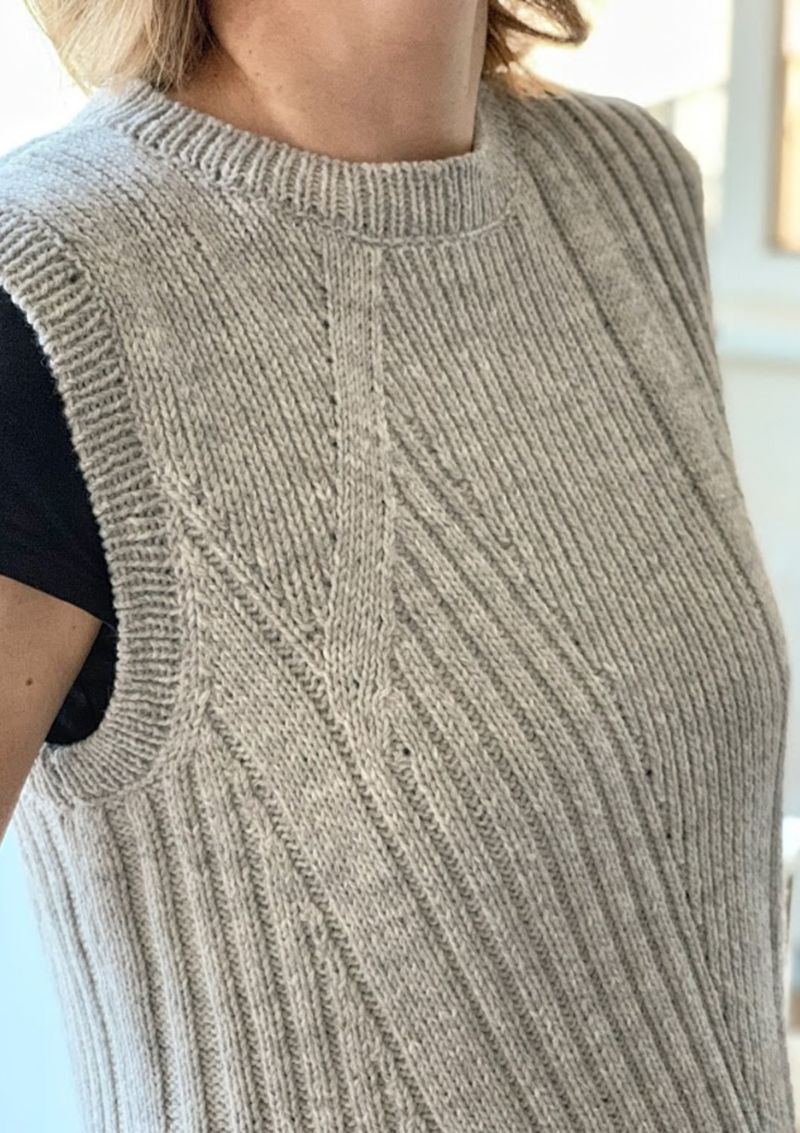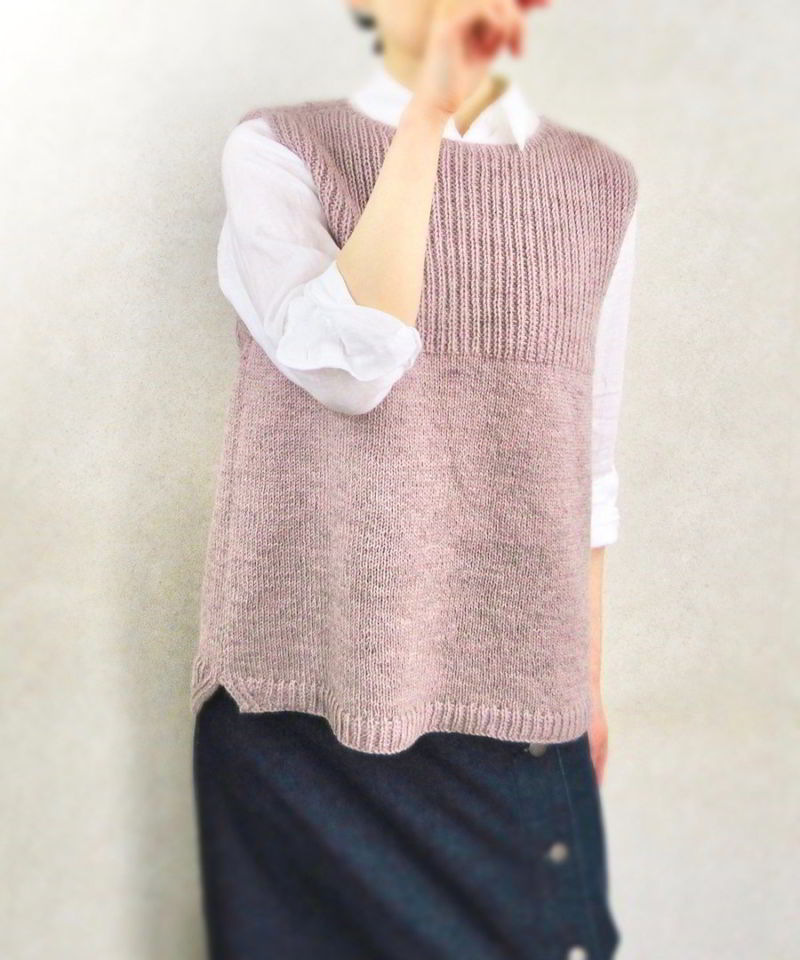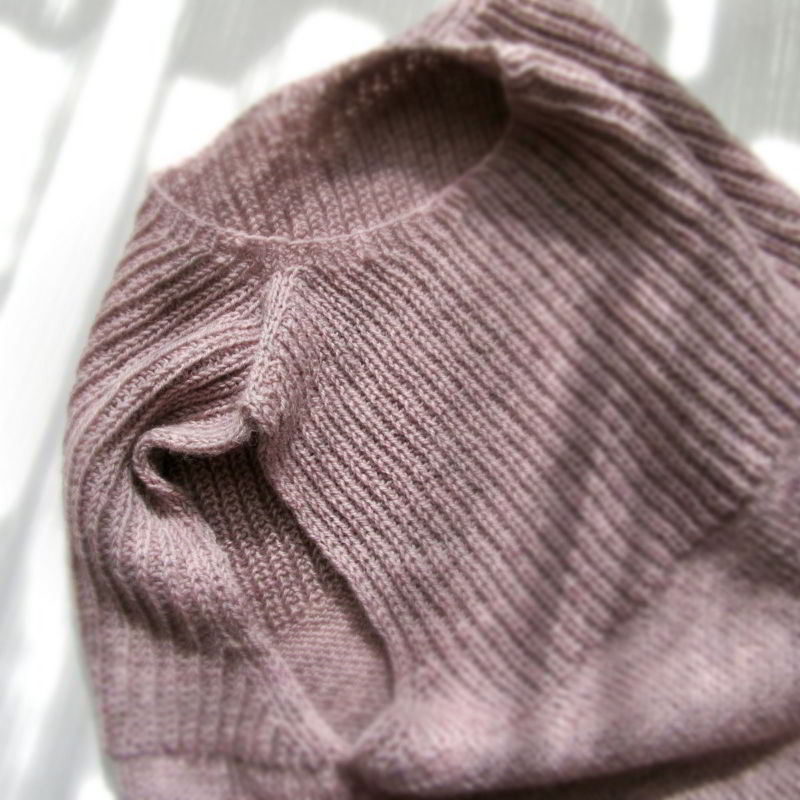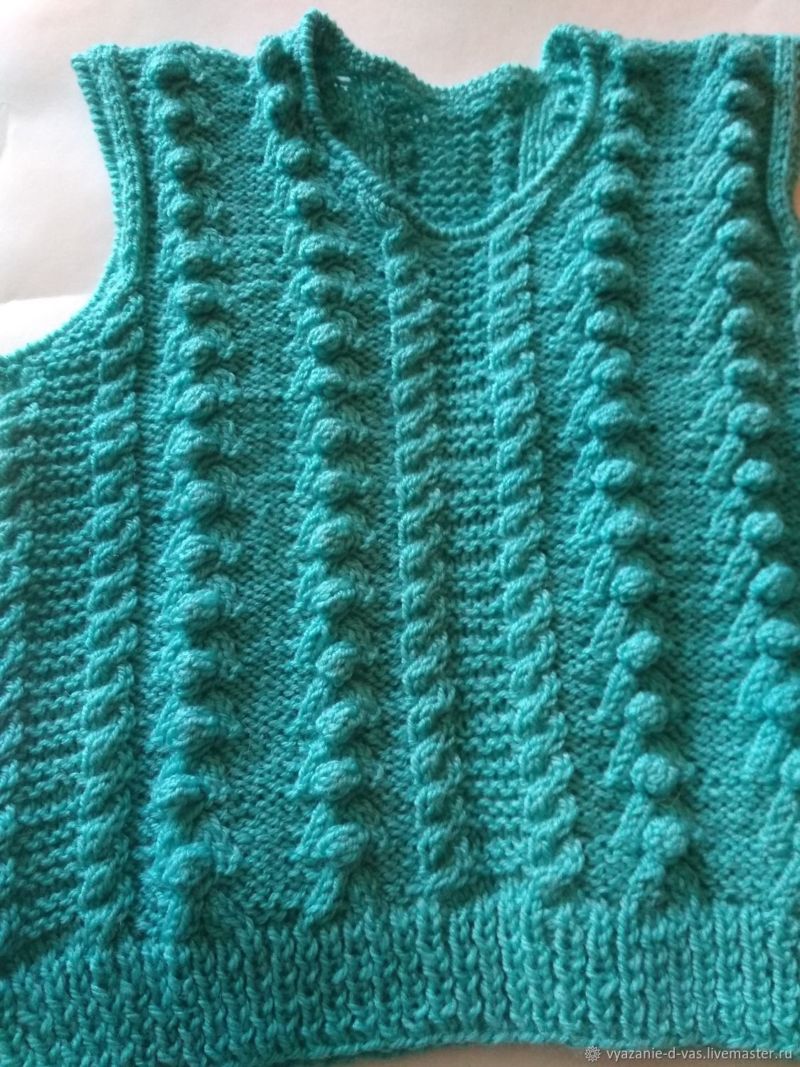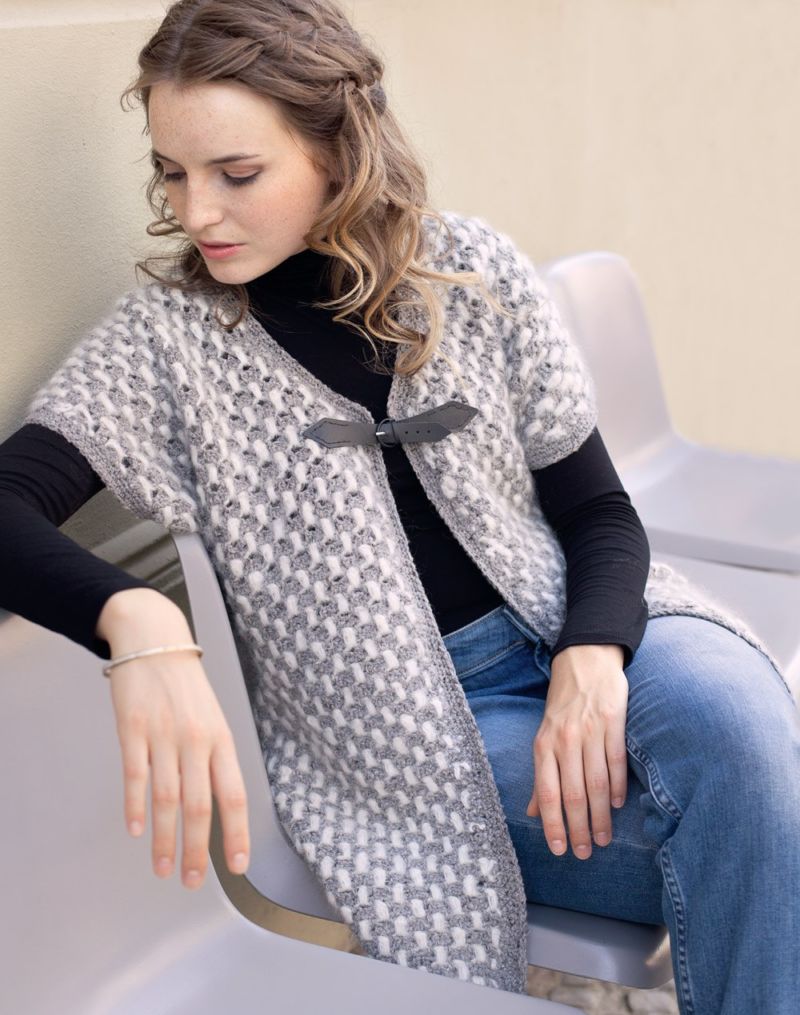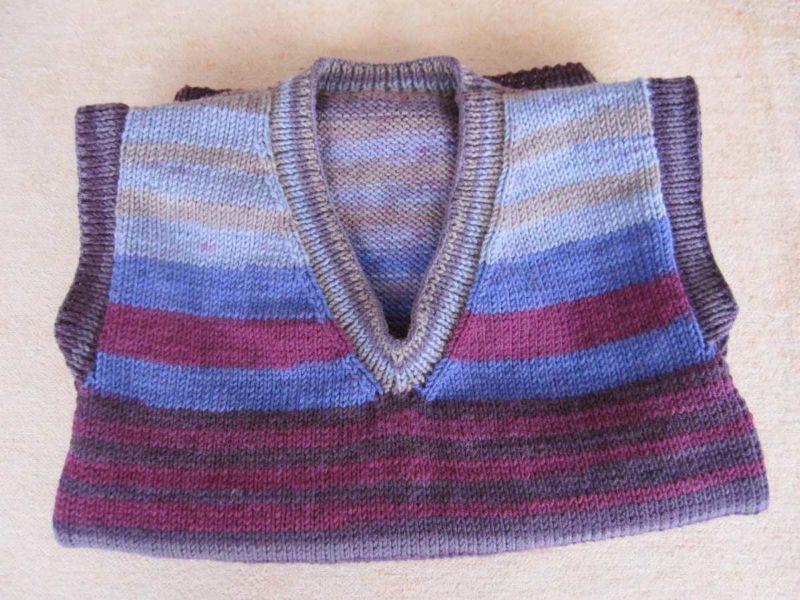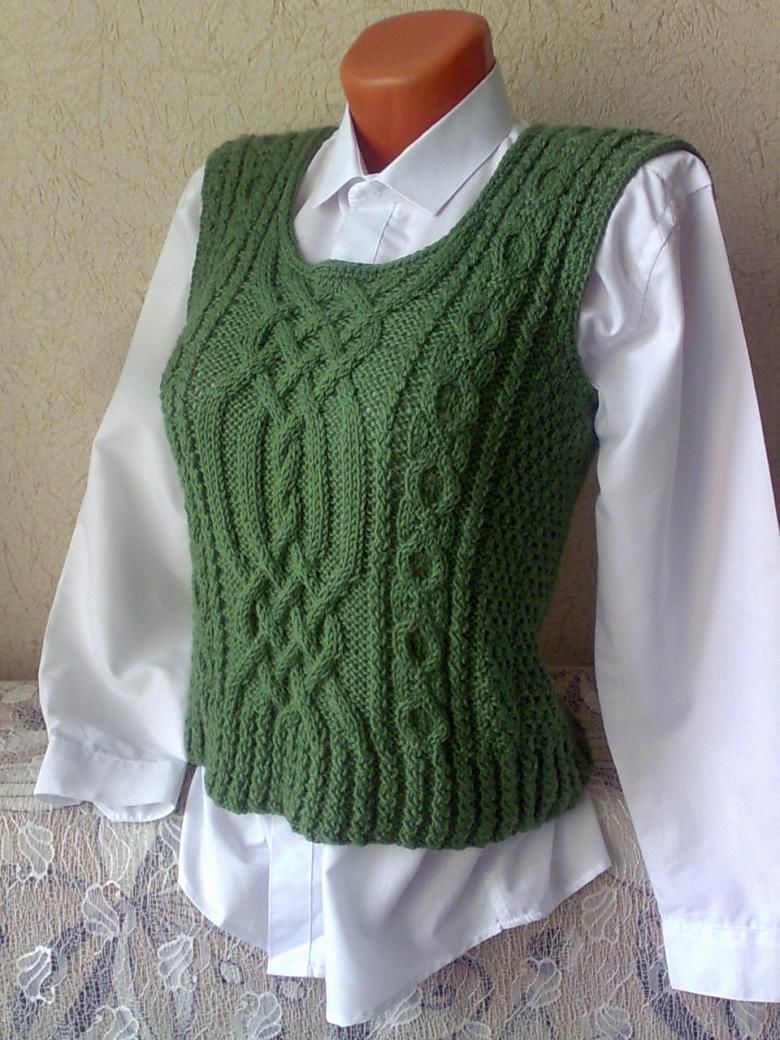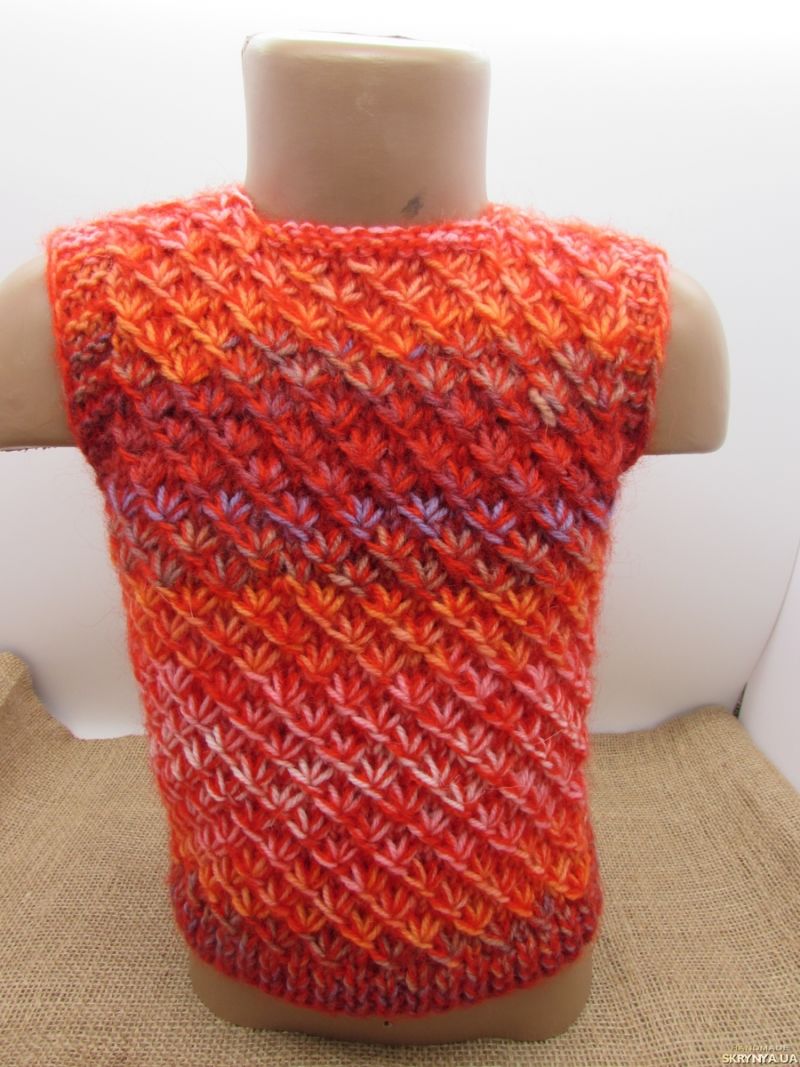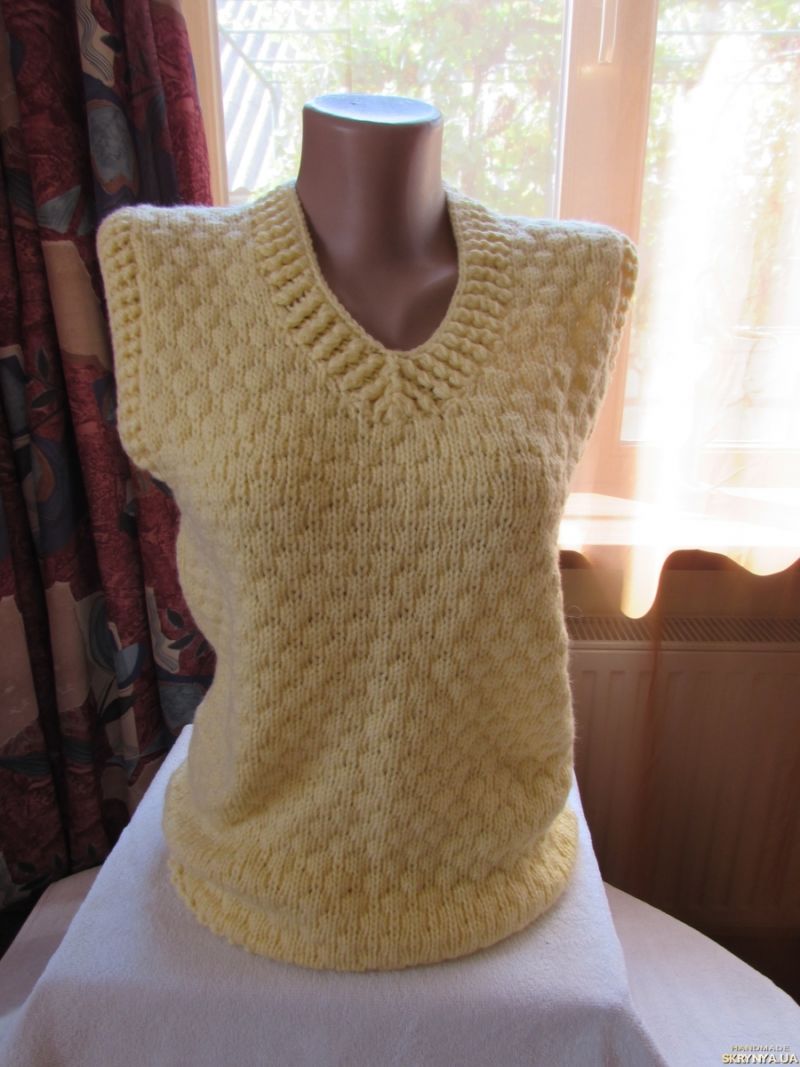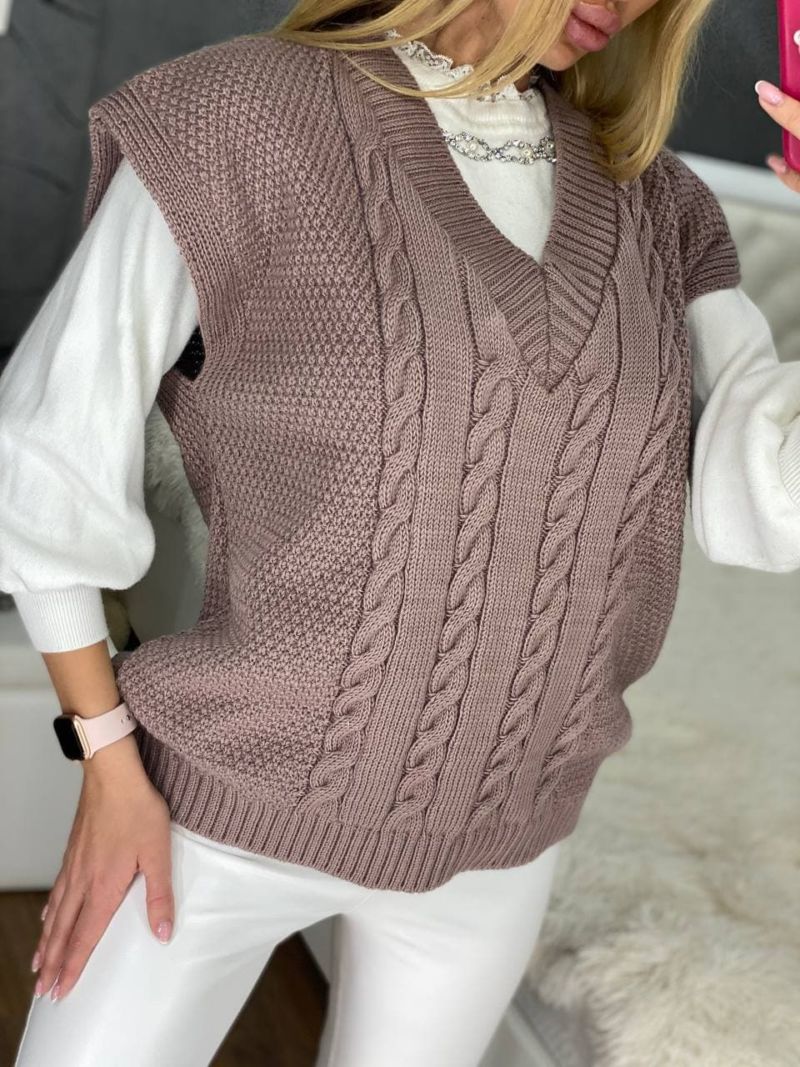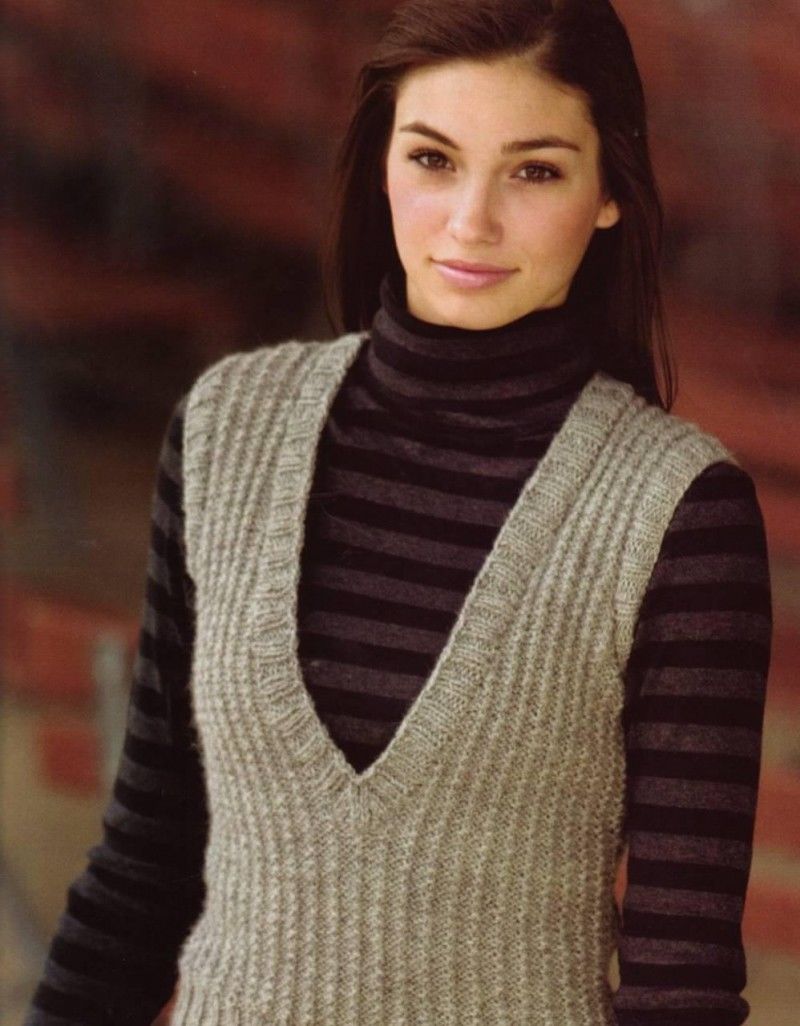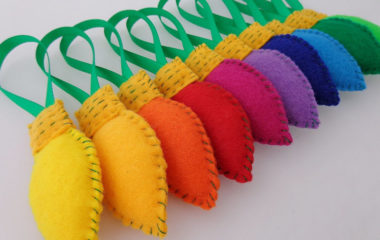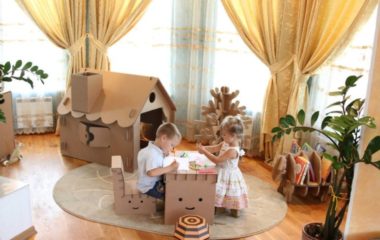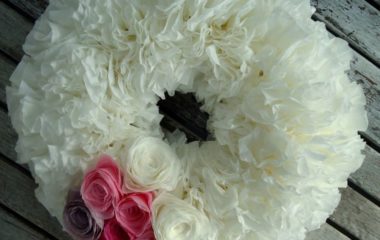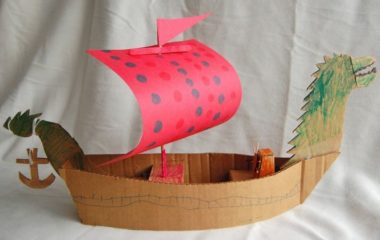How to knit a sleeveless jacket by scissors and crochet for beginners: making a pattern, the choice of yarn and a master class with a description
Cozy and familiar, but long acted as Cinderella, today knitted sleeveless jacket came out of the shadows. Many fashion houses have included it in collections and made it a trend.
Every needlewoman who knows how to knit a unique sleeveless jacket with scissors or crochet can become a trendsetter.
Sleeveless styles
The choice of current models of vests is wide and fans of all styles of clothing can easily find your style.
Fashionable style trends for women:
- Classic:
- feminine products of a fit silhouette and medium length;
- Strict vests (preppy, British country style, tennis style);
- a revived "granny" vest.
- Minimalism:
- Straight sleeveless vests with a golf collar in a simple silhouette;
- oversize pieces, essentially classics, but in an outstanding size;
- Vests with unusual cut lines (asymmetry, overlapping strips, cuts, etc.).
- Fancy style:
- Fishnet tops and tunics for the heat;
- Colorful vests for boho lovers;
- combined ethnic sleeveless jackets.
With men's models is easier: many men are conservative and choose simple shapes. For them, color, decor and comfort are important. Therefore, when creating a men's sleeveless vest, it is useful to know where the owner will go in it.
- A classic vest will be comfortable for work in the office. A sleeveless sleeve with a buckle or a one-piece vest with a V-neck is a good choice. Shawl collar will refresh the style. Colors: monochrome, discreet stripes or jacquard ornaments.
- Men's knitted sleeveless jacket for the holidays should be light and warm, to protect from wind and cold. Will be good models associated with arans or in the Norwegian technique. The collar is suitable for any: golf, round, shawl, hood.
- When knitting for a baby, you can let your imagination run wild: pompoms, tassels, fun ornaments and intarsia, unexpected color combinations.
But with a teenager's decisions should be made jointly. Usually young people demand attention to their opinions.
Choosing tools and yarn
The model is already in your head, but the doubts do not go away? It makes sense, because for success is not enough fantasy. You need actions, such as buying good tools. We choose them taking into account the seasonality of the product, the yarn, the pattern, the density of the knitting. Here are a few simple rules.
- Selecting knitting needles:
- needle number (its diameter in millimeters), should be one more than the thickness of the yarn (yarn marked 3 - needles #4);
- diameter of a double folded and twisted sample - number of needles;
- for fancy yarns, the needles are 2-3 numbers greater than the yarn thickness;
- tool length should be sufficient to distribute the knitting with light gathers;
- material is selected by the type of knitting and thickness of the yarn: metal is good for wool and acrylic, wood or bamboo is suitable for slippery yarn, plastic is chosen for voluminous fabrics.
- Hook selection:
- choose the thickness (head diameter):
- ultra-thin (0.5-1 mm) for lace,
- thin (1-2 mm) for light things with thin yarn,
- medium (2-5 mm) for warm things,
- thick (6 mm and higher) for warm clothes and interior furnishings.
- the choice of hook length is simple:
short (12-15 cm) - universal,
long (20 cm) - for tunisian knitting.
- the ideal shape of the head of the hook is a rounded cone;
- material:
- A practical and durable steel hook, suitable for all yarns,
- aluminum is light, but leaves stains on light and bends,
- plastic is light and smooth, but electrifying,
- wooden is very beautiful but gets burrs,
- bone would be the best, but fragile.
Important: Composition, weight and length of yarn, knitting densities and needle and hook numbers of shade and batch are placed on the label.
Yarn selection
The variety of yarns for needlework is great: cashmere and mohair, angora and merino, bamboo and acrylic. It's hard to choose. The system will simplify the task.
Basic criteria for buying yarn:
- color
- composition;
- structure;
- yarn thickness;
- length in a skein.
The color is the basis of the bases. It is labeled with the word "Color ___" and the lot number (Lot). One item, one lot, is important; you don't want an item with overflowing colors. Be sure to keep the label to the end: if you don't have enough yarn, it's easy to buy more.
The composition of the yarn, the quality of the product and wearing comfort. According to the composition are distinguished:
- natural (wool, cotton, linen, silk, bamboo);
- blended;
- artificial (viscose, lyocell, acetate, triacetate);
- synthetic (acrylic, elastane, Lycra).
When choosing a yarn by composition, each case is unique. But the obvious truths work:
- light models knit from cotton, linen, silk, viscose, fine wool and artificial fibers.
- For warm ones - wool, acrylic.
The fiber structure of the yarn depends on:
- fiber composition: long, coarse fibers make a dense and smooth yarn and soft, loose and fluffy yarn makes a short and twisted yarn,
- type of spinning: combed gives the best quality yarns, carded yarn is light and airy, the product of machine spinning is loose and fluffy,
- strength and method of twisting: there are several methods (traditional, twisted, multi-strand, single twist), it is impossible to find the best, but experienced craftsmen say that too strongly twisted thread distorts the fabric.
The thickness and length of the thread are indicated on the label. A thread length of 200m and weighing 100g will be labeled "100g/200m". A greater meterage per 100 grams is a thinner yarn. But the weight of the yarn is not only its thickness. A 100g skein of down is bulkier than a ball of coarse wool of the same weight.
The suggested principles are useful, especially in the beginning, but they are not a dogma. Experiment and find your way. With experience you will have your own manner and come freedom of creativity.
Knit a sleeveless jacket
Constructing the pattern is the first step. Since originally the sleeveless jacket was a subject of men's closet, and only much later was appropriated by ladies, the differences in knitting the classic model for men and women are extremely small.
We offer a description of a universal model.
For any sleeveless jacket you need to take measurements and make a pattern. You won't need a lot of measurements:
- The circumference of the chest, the hips, the neck;
- the length of the product;
- Height to armhole;
- the width of the shoulders.
Important: It is desirable for women to take measurements in a bra. Its presence is reflected in the size.
Layout of thick paper in full size is mandatory. Patterns for sleeveless sleeves are very simple: they may not have darts and armholes.
They are essentially two or three rectangles that are easy to construct. But simple is not superfluous. The knitting details are checked against it and it contains the key dimensions: the height of the elastic, the height of the product, the depth of the neckline, the height of the rise.
When the pattern is ready, you can move on to knitting.
Let's knit a sleeveless knit with scissors.
Making a pattern
Knitting a sample is extremely important. To do this, buy a skein of yarn.
Important: The larger the sample, the less error. Knit a 15*15 cm square.
Measure the sample twice: before the wet-heat treatment (WHT) and after:
- dry sample straighten and poke on a flat porous surface, sweep out a square with 10*10 cm threads;
- count the number of loops in the square, write it down;
- peel off a sample and conduct the WTO;
- again count loops in the dry square, write down.
According to the change in the sample, count the shrinkage coefficient (SC) or the stretching coefficient (SC): the ratio of the size of the sample after the WTO to the size before. Calculation by the example of the coefficient of shrinkage:
- density before WTO - 30 p. and 29 p., after - 28 p. and 27 p.;
- horizontal CG = 7% = 100 - (28 st. / 30 st.) * 100;
- vertical CG equaled 7% = 100 - (27 st / 29 p.) * 100;
- to the number of loops in the calculation add 7% (an increase of 1.07 times), rows - + 7% or 1.07 times.
When increasing the sample after washing determine the CR and reduce the number of loops and rows.
Important: If the model with an elastic band and cuffs, it is knit in the sample.
Count the amount of yarn. To calculate the weight and metreage of the skein from the label, so it is more reliable, but the result is still inaccurate. To calculate:
- dissolve the sample;
- we measure the length of the thread in the square 10*10 cm (we have - 10 m), write down;
- the area of the pattern: how many 10 * 10 cm squares in the pattern (we have 39.2 = (56 cm (width) * 70 cm (height))/100);
- we calculate according to the formula: length of thread in the pattern * area)/ number of meters in the skein (we have 200 m)
(10 m * 39.2)/200m = 1.92 skeins,
- plus a 10-15% margin.
Important: Try to write down all the figures. Especially at the beginning.
Calculation of the number of loops for a set. Count the number of loops for a set:
- density before WTO - 30 sts. per 10 cm, the width of the part - 56 cm, we get:
178 p. = (30 p./10 cm. * 56 cm) * 1.07 (horizontal CG),
- in the same way count the number of rows.
Knit back.
Let's start knitting the sleeveless jacket from the back. To make it perfect, you can start knitting with an Italian set. You get an elastic edge, similar to the factory one. It's easier for beginners to do a regular set of stitches.
Important: For the tightness of the edge when typing, use a needle number smaller than the main knit.
Dial in the desired number of stitches plus the edge stitches. The edge stitches are auxiliary and are hidden in the stitch when assembled. They are not part of the pattern, are dialed in extra and are knitted especially.
For selvedges going into the seam, the basic way of knitting a selvedge will suffice:
- chain;
- knotted selvedge.
The open edge of the fabric is knitted in other ways:
- "double chain";
- with the penultimate one to the last right;
- pearl pattern;
- shawl knitting;
- "garland".
After knitting the rubber band, we move on to the main pattern. When transitioning:
- On the arahns, add stitches;
- on the puffy knit, the stitches are reduced.
Important: For quality, master the technique of knitting a tight rubber band (one-and-a-half, with twisted loops).
At the height of the armhole, we do the subtractions: on the edge of the selvedge or internal. Two centimeters before finishing, knit a sprout and a shoulder bevel.
Knit the front
The front of the one-piece sleeveless jacket is knitted as the back up to the neckline. Then divide the piece in half, attach the second thread and knit both halves simultaneously on the same pair of needles.
The neckline stitches symmetrically. Reaching the level of the shoulders, start counter-skimming the bevel, similar to the back.
There are two ways to finish the clasp, neckline and placket:
- One-piece knit details;
- Individual parts.
For the all-knit neckline, close the shoulder loops, leaving the straps uncovered, and knit the straps to half the width of the back rise. Do not close the loops of the strips, remove them on a pin.
When assembling the strips of both halves are joined "loop in loop", fastened and sewn into the neck of the back.
For many lovers it is important to know how to knit a sleeveless jacket with a button fastener.
The approach for all such products is the same, but a little differently knit the shelves of such a sleeveless jacket. They are knitted in parallel from the beginning of the work, so they will be perfectly uniform. To do this, take two skeins and a pair of spokes.
For a model with a separately tied plank, take into account 3 cm of the plank in the calculation: the number of loops equal to half of the loops from the back, reduce by four. The placket will be finished after assembly or sewn on.
At this stage it is important to check the details with the pattern.
Sewing and assembling
Executed parts are subjected to water: wash with a suitable tool, squeeze out through a towel roller and spread out on a flat surface. Give a shape according to the pattern and prick on the perimeter. Dry.
Articles made of yarn that cannot be washed are fixed in the same way and covered with a wet towel. Let dry.
Important: Before assembling the parts of the sleeveless jacket must be absolutely dry.
Sew the sleeveless jacket by any convenient method (machine, hand needle, crochet) in the following order:
- shoulder cut;
- side seams.
If the hem, neckline and armholes are tied separately, after sewing both shoulder seams on a model with a buckle or V-neck, the hem is tied over or sewn with a basting stitch.
For a sleeveless sleeveless jacket with a round neck, the shoulder is sewn, the neckline is trimmed with a hem or collar, and the second shoulder is sewn. Steamed shoulder seams. Processed obtachkoy armholes.
Sew side seams. Buttons are sewn to the zipper. Sleeveless jacket ready.
Important: sewn-on buckle stitching is better to knit two parts: first the one that does not have loops is sewn on, by it calculated places for the loops and the second half is knitted and sewn. On the back of the strips are docked.
Knit sleeveless by crochet
Women's sleeveless sleeveless jacket is crocheted necessarily on the pattern. About the construction of the pattern we have already mentioned above.
Therefore, let's go straight to the consumption of yarn. Experience has shown that if knitting a sleeveless sleeveless jacket for a woman size 48-50 takes 3-4 skeins of 200 m, the vest of the same size, tied with a crochet, will take 7-8 balls. Beautiful, but expensive.
Crochet
The product is always crocheted according to the schemes:
- schemes for crocheting straight and circular fabrics are made up of rotary and circular rows,
- schemes contain a repeating part of the pattern - the rapport,
- the scheme of straight and rotary rows has a rectangular rasport and the knitted fabric is flat,
- the straight pattern is read from the bottom up: the first and odd rows from right to left, the second and even rows from left to right,
- circular rows are read from right to left,
- the circular knitting is extended from the center by hoop loops,
- according to the "circle rule" the number of columns in the new row is twice the number of columns of the previous row.
Circular knitting
Within the framework of a small article it is difficult to describe the multifaceted process of knitting with circular schemes, because each scheme is individual and contains a unique style.
Products in this case are assembled from individual elements in different ways and do not have traditional seams.
Stylistically, these models are the epitome of femininity and beauty.
To read the schemes there are conventions:
- air loop;
- semicolon with a stitch;
- The columns: without a stitch, with one, two and three stitches, twisted;
- loop with a hook.
Experienced needlewomen can easily create author's models in circular knitting.
Straight knitting
The principle of knitting a sleeveless sleeveless pattern is similar to knitting with scissors:
- the parts are knitted according to the pattern;
- Waxing (steaming) and assembling;
- If necessary, tied sections of parts.
Such products can be dense and openwork, depending on the knitting scheme.
In the technique of straight knitting you can create a women's and men's vest.
Sleeveless sleeve in freeform technique
Interesting and unique will be the model, tied in the technique of freeform - when one product combines parts made with knitting needles, crochet and other tools.
The product is made of individual parts (scrambles), formed in the form of our unchanging pattern and fastened together. Patterns in the pieces are made from different types of yarn in different colors.
In things free style is acceptable to use different volumetric flowers, petals, motifs and abstract shapes.
Models made in the freeform technique can be rightly attributed to the small works of art - so they are unique and original.

